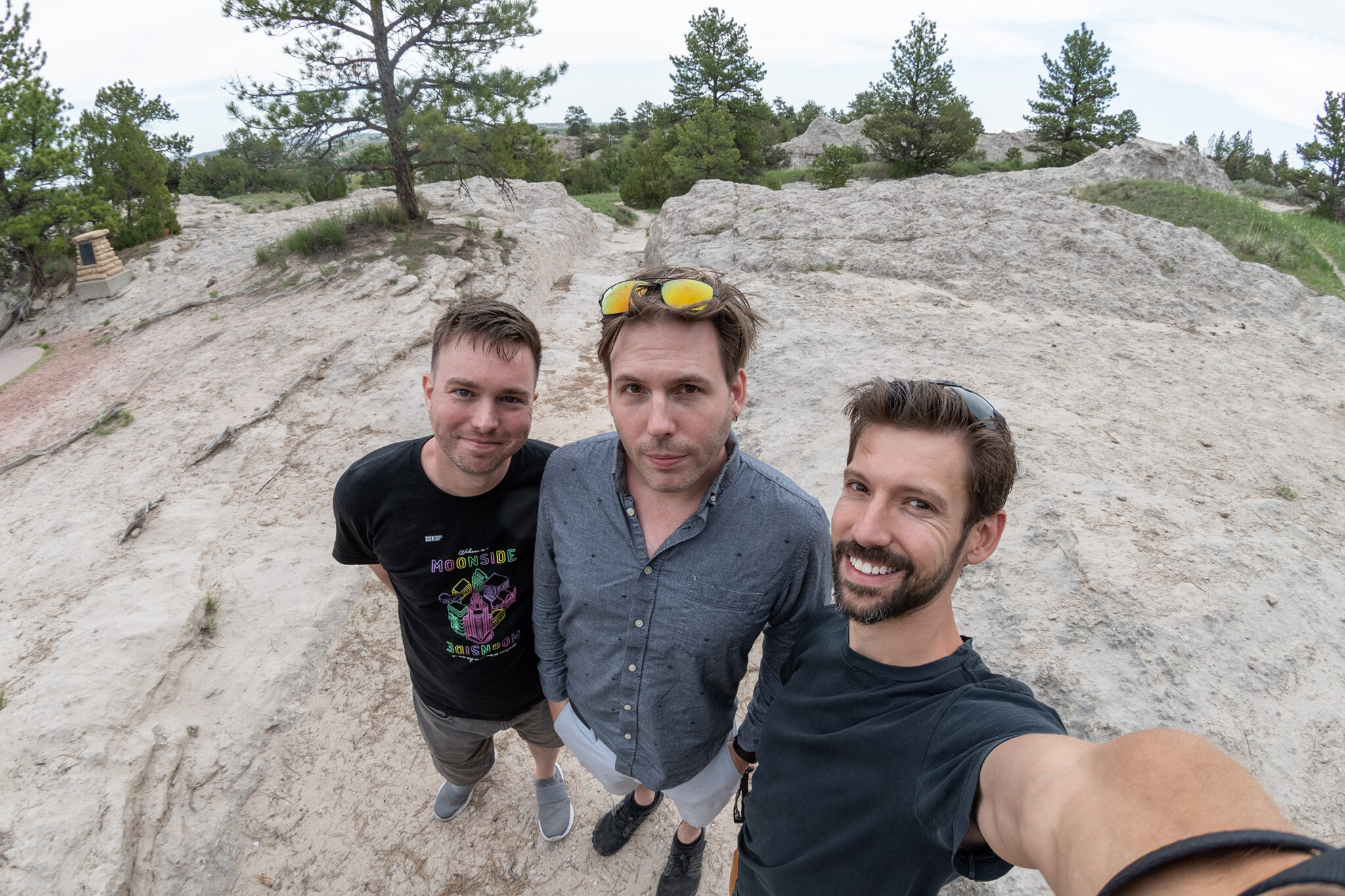I woke up this morning surprisingly well rested and without any immediate automotive chores, so I went on a run down the river trail in Hot Springs and up into the neighborhood for a look around town while Evan tried to work some magic on his door or heater.
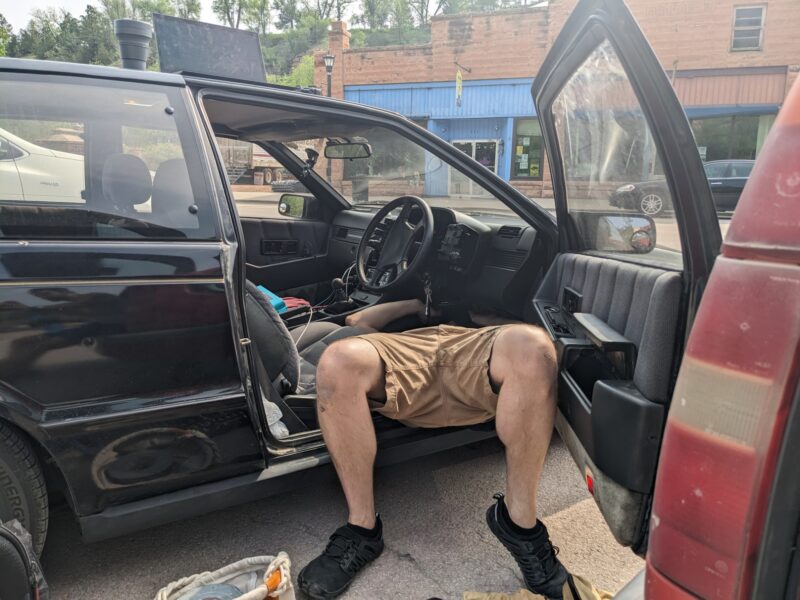
Four miles later, I packed up and we headed down the block for breakfast before heading out of town. Not far into today’s drive, we crossed into Wyoming and headed south. The Volvo was feeling rather sluggish, but when we stopped at an overlook, I realized we were driving into an absolutely fierce headwind and that made me feel a little better.
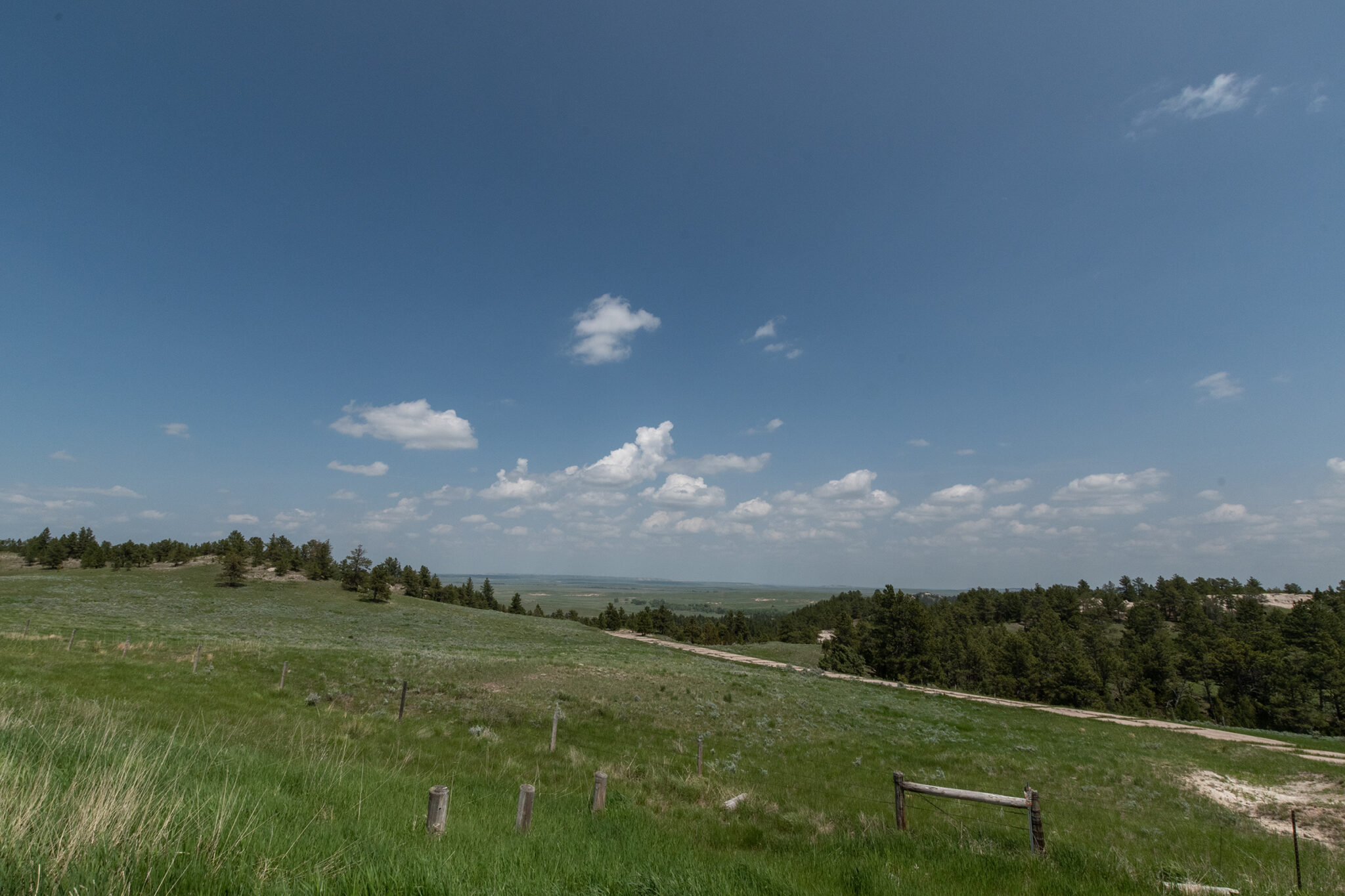
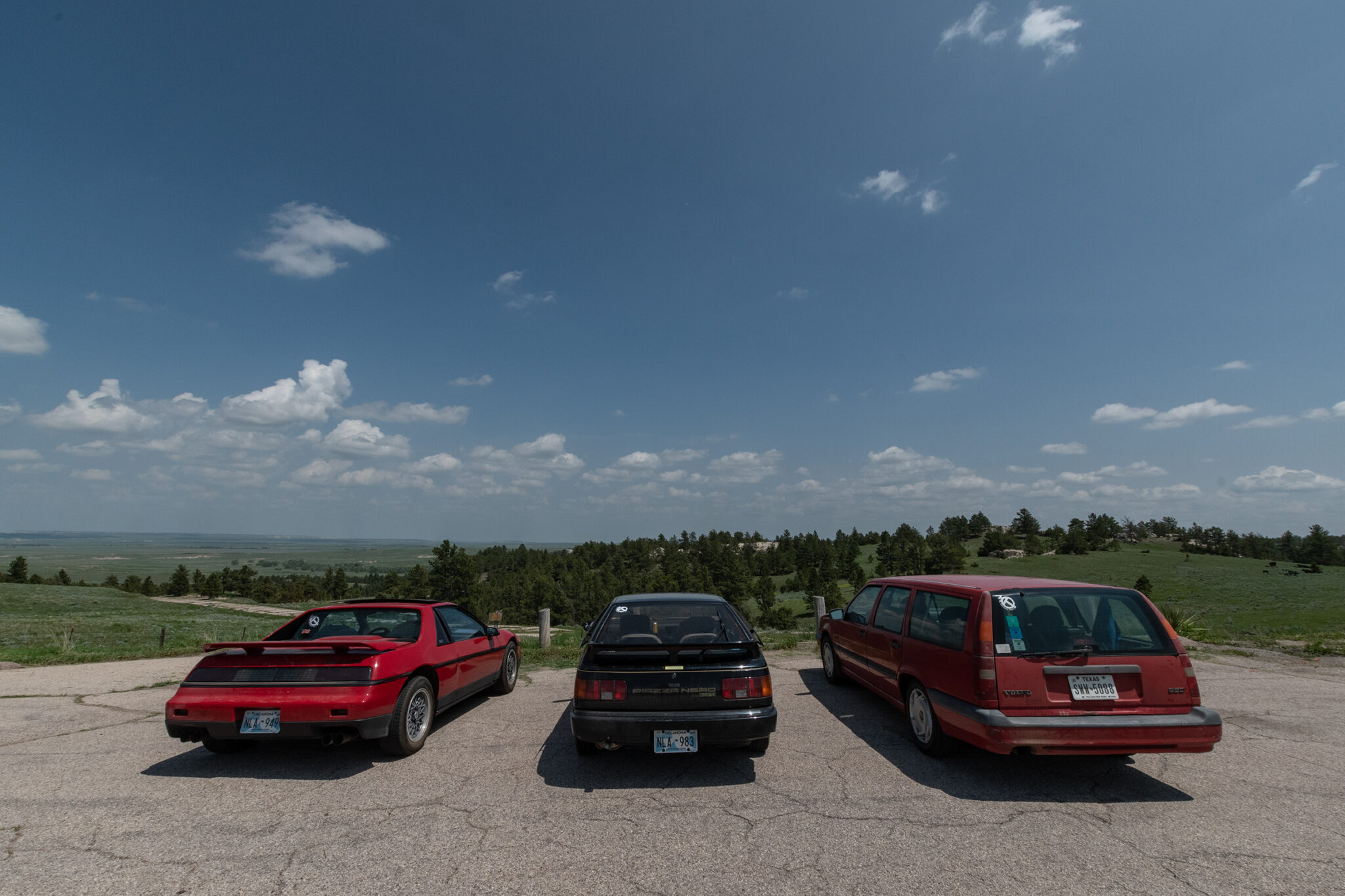
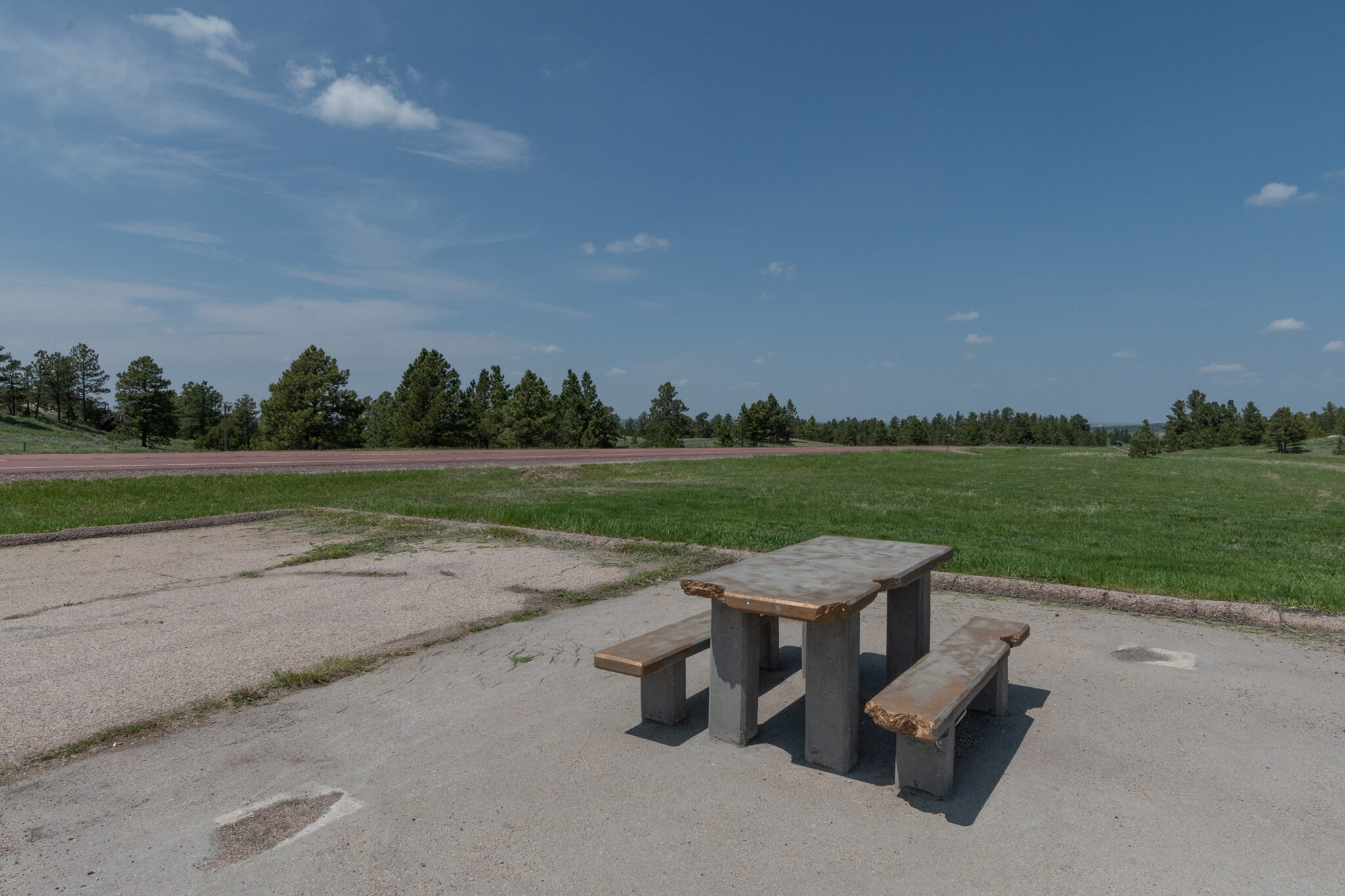
Along the way, we stopped at a NAPA in Lusk, WY for a few supplies. I’m gonna see what new spark plugs do for my situation. George needed a battery (ouch). Evan needed a tubing and hose clamp to bypass his (still stuck on) heater.
Fort Laramie
We rejoined The Oregon Trail proper not far from Fort Laramie, Wyoming — another famous waypoint for both westward emigrants and early video gamers.
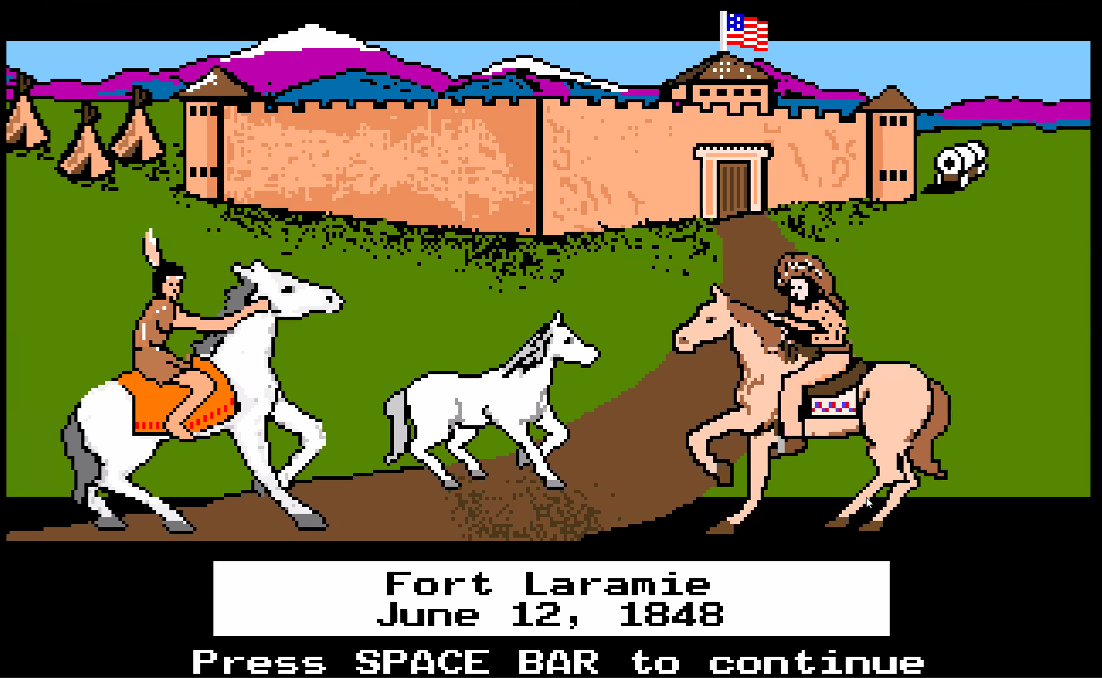
Fort Laramie once stood sentinel over the Oregon, California, and Mormon emigration trails; was a stop on the Pony Express route; and served as a staging ground for both peaceful and hostile dealings with Plains Indians. Its association with important figures, including Sitting Bull and Crazy Horse, and historic events makes Fort Laramie an icon of the American West. The one-time Army post, now managed by the National Park Service as a national historic site, looks much as it did 150 years ago.
National Park Service
The fort was originally built in the 1830s to support the fur trade. Sitting along the North Platte River before the foothills of the Rocky Mountains, it was a useful stop for emigrant trains headed west. The Army took over the fort and used it as a supply and protection outpost for travelers.
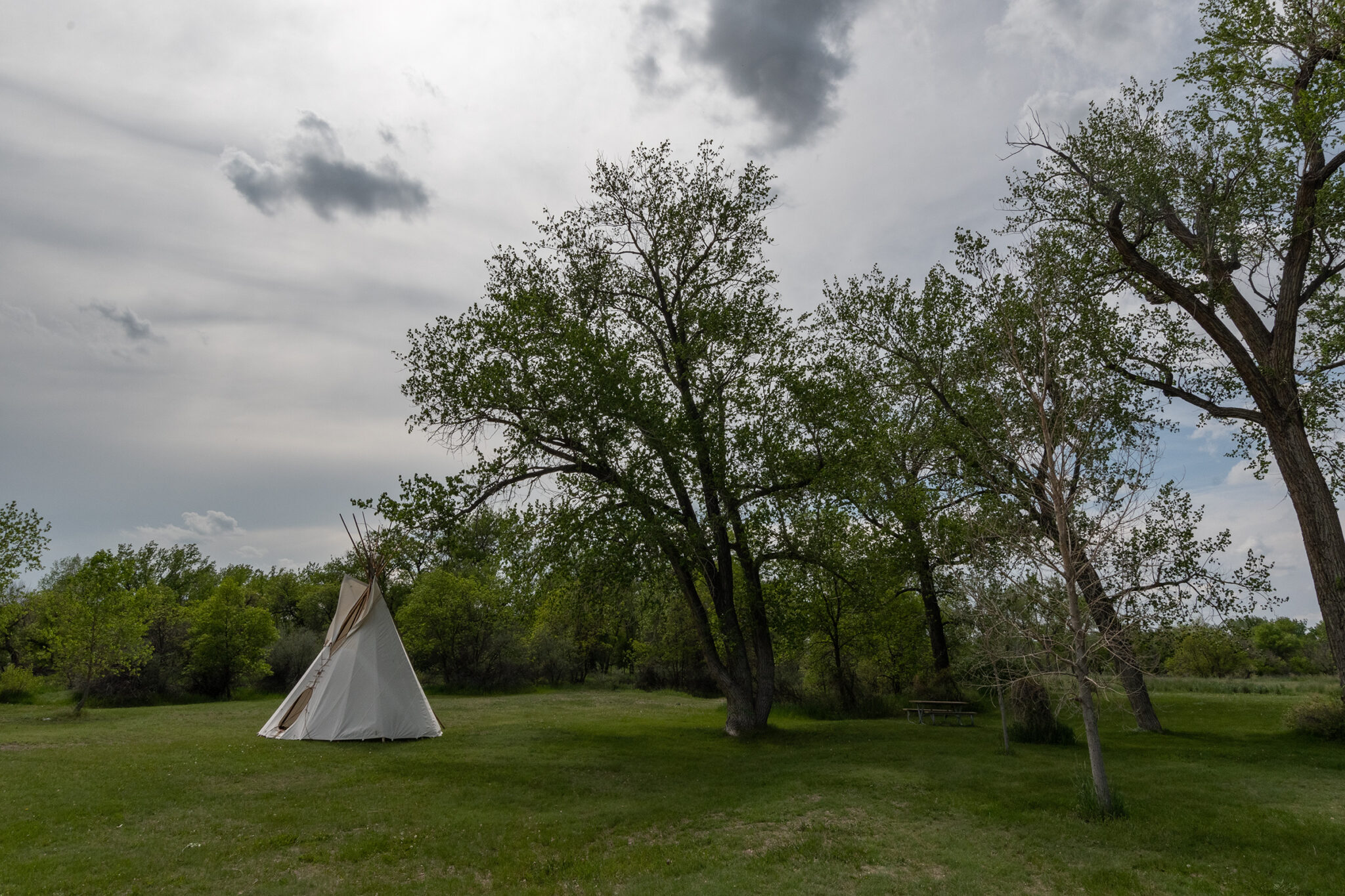
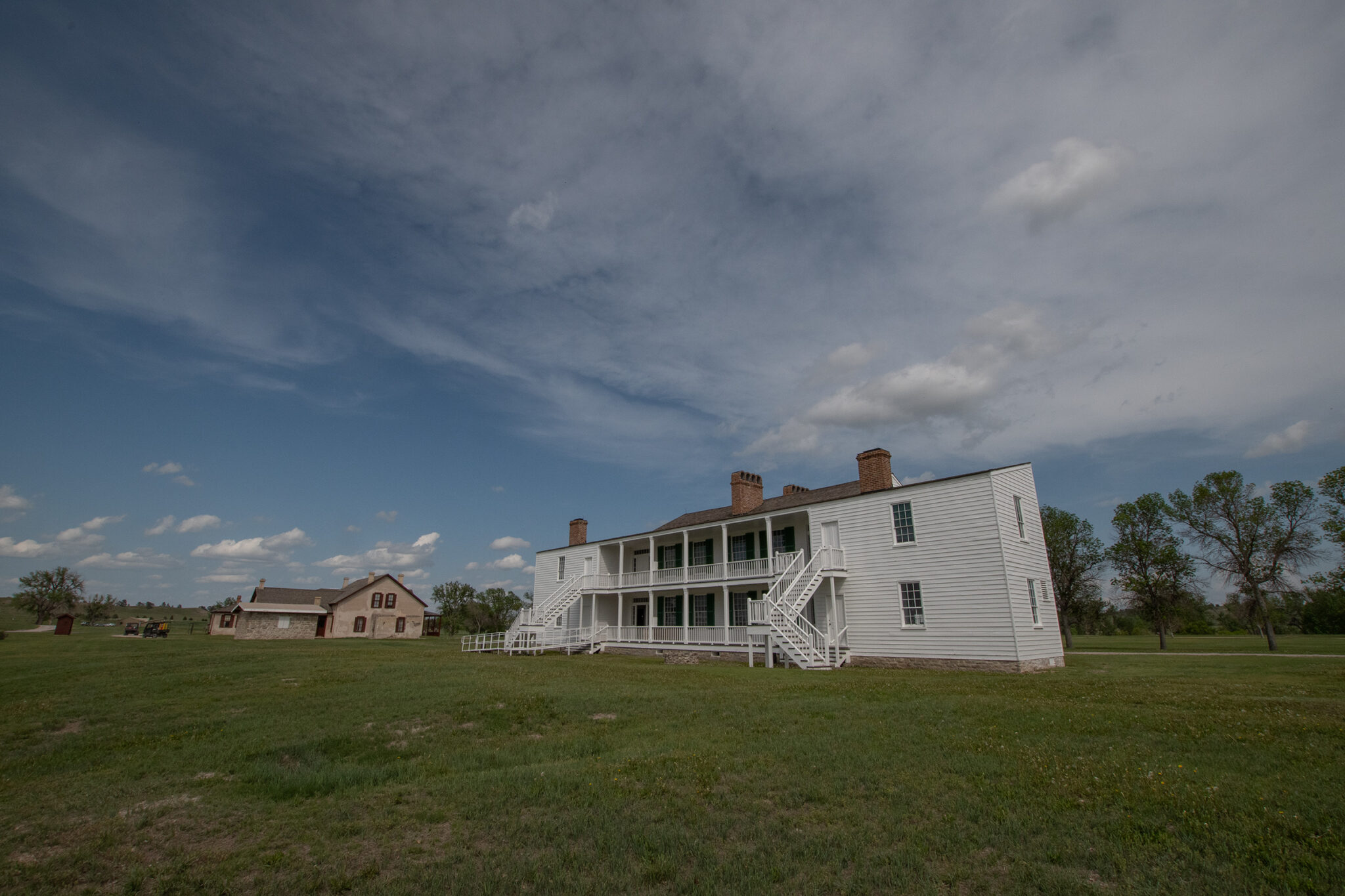
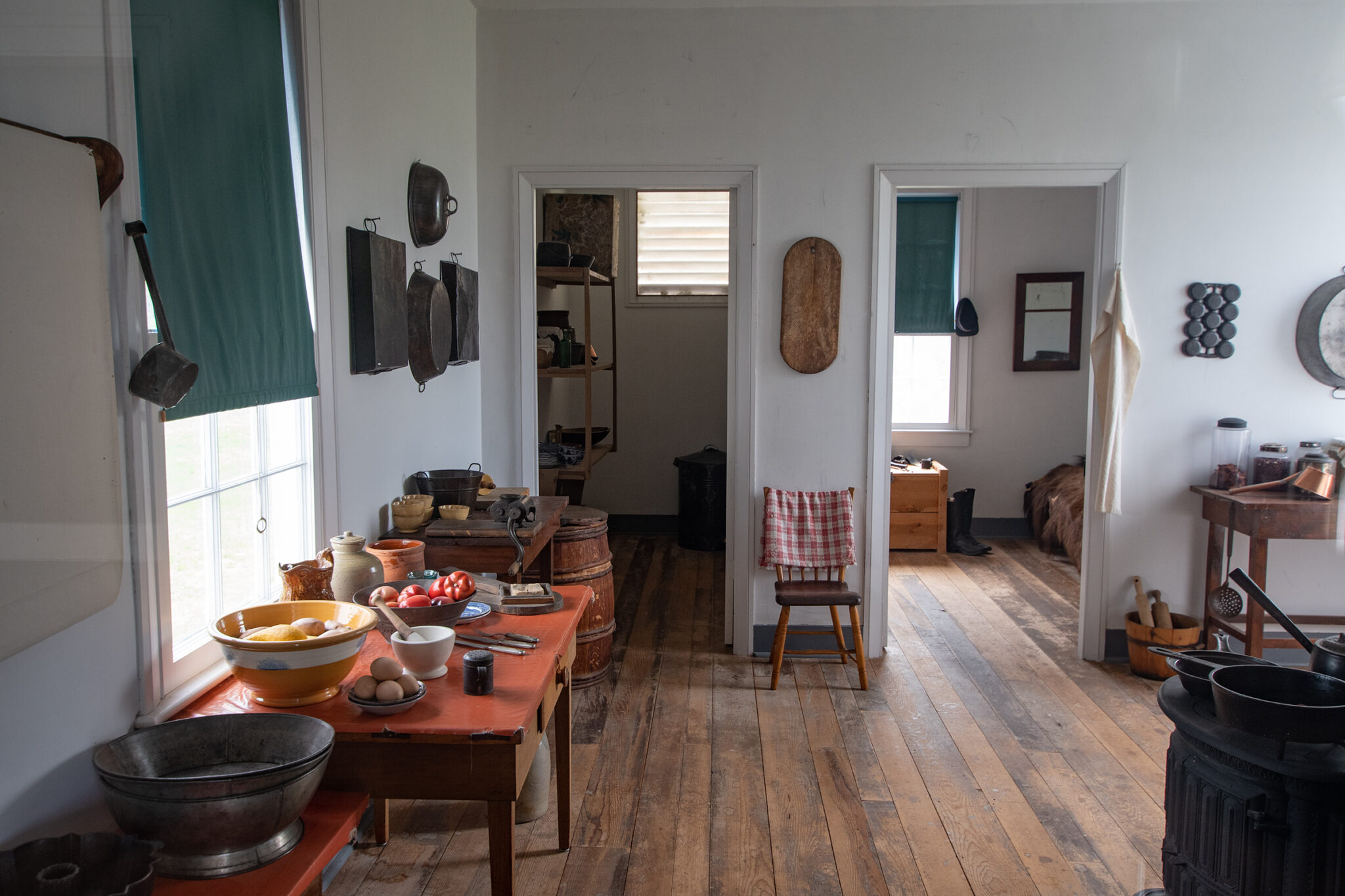
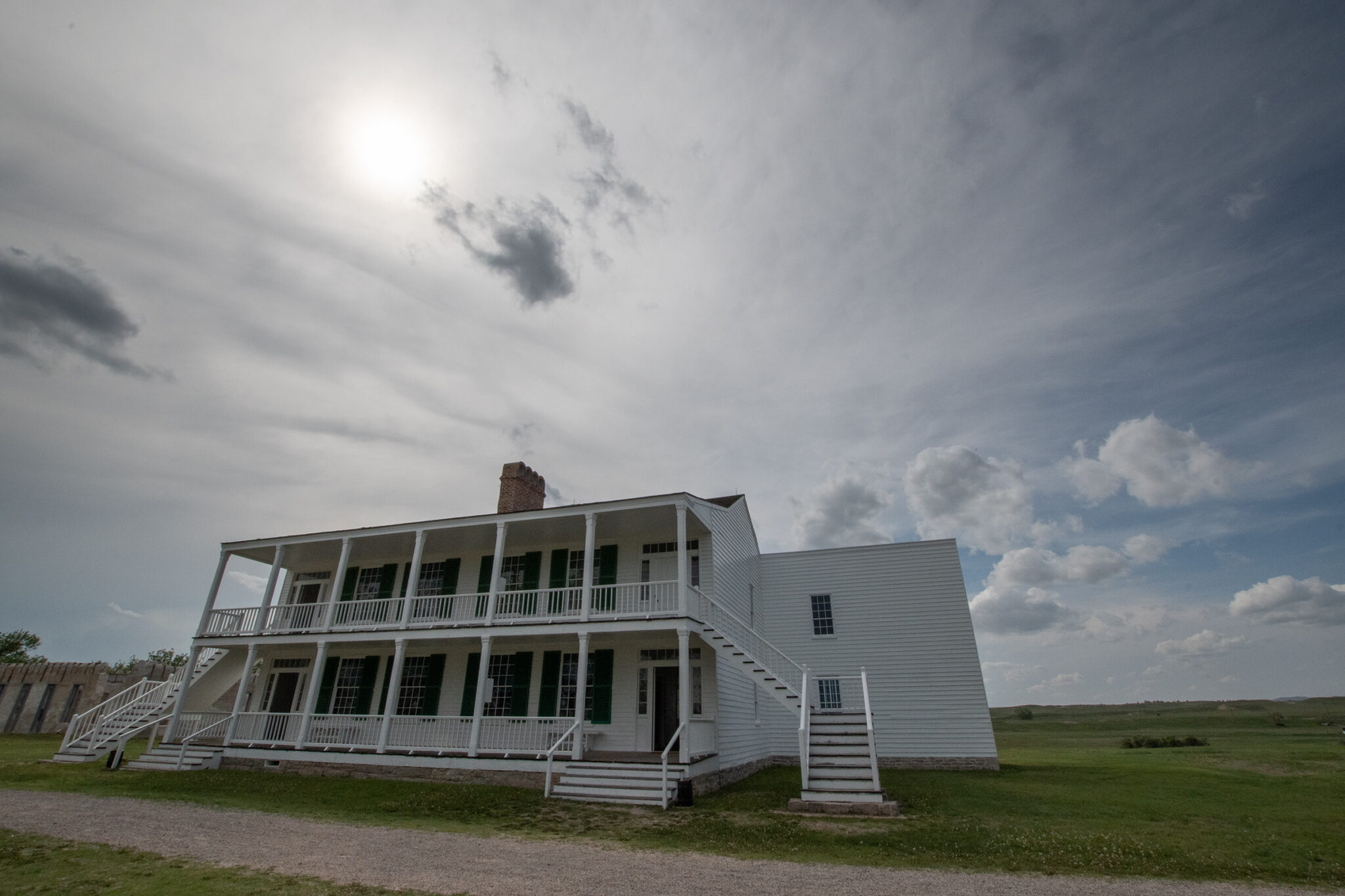
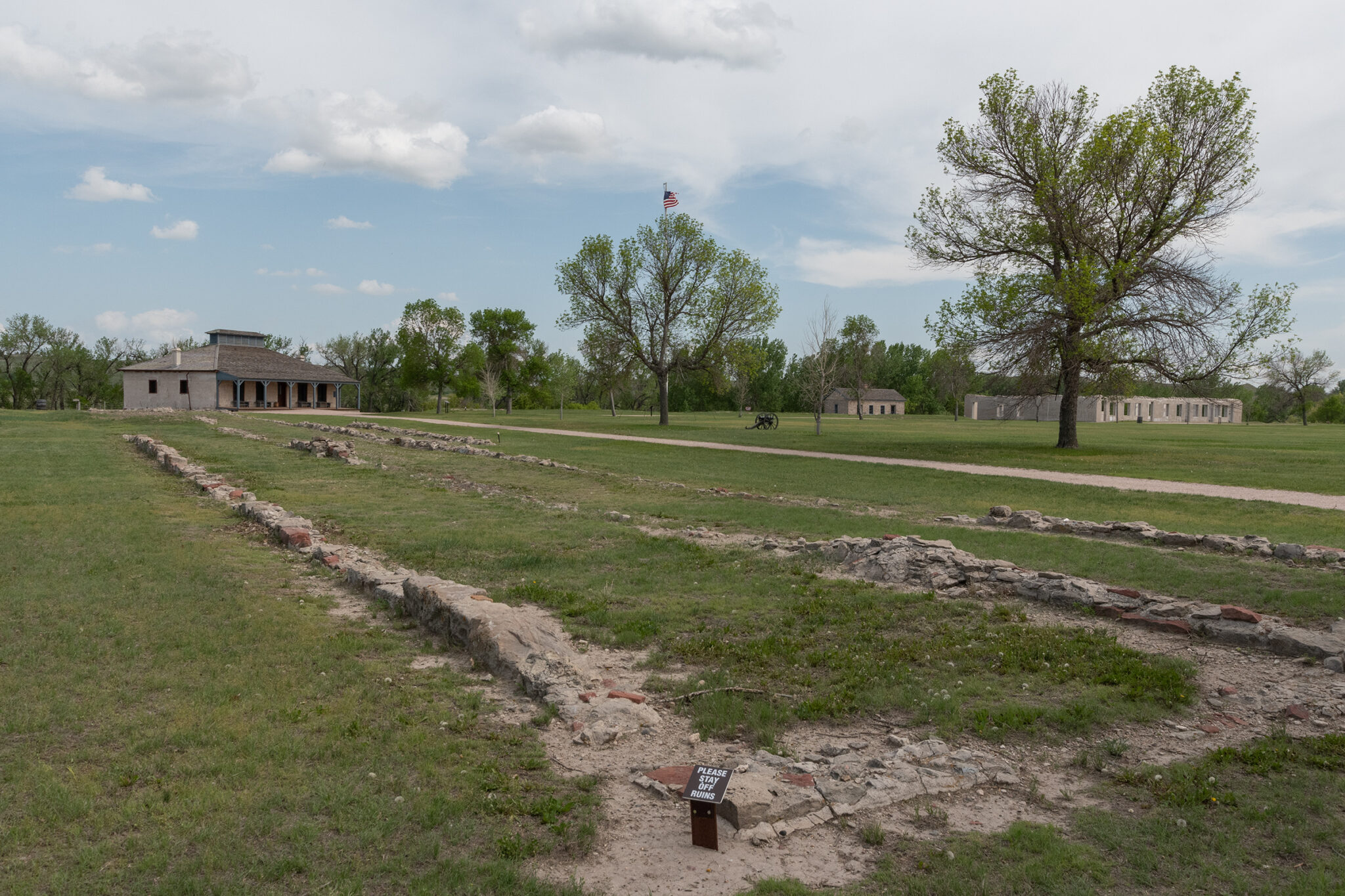
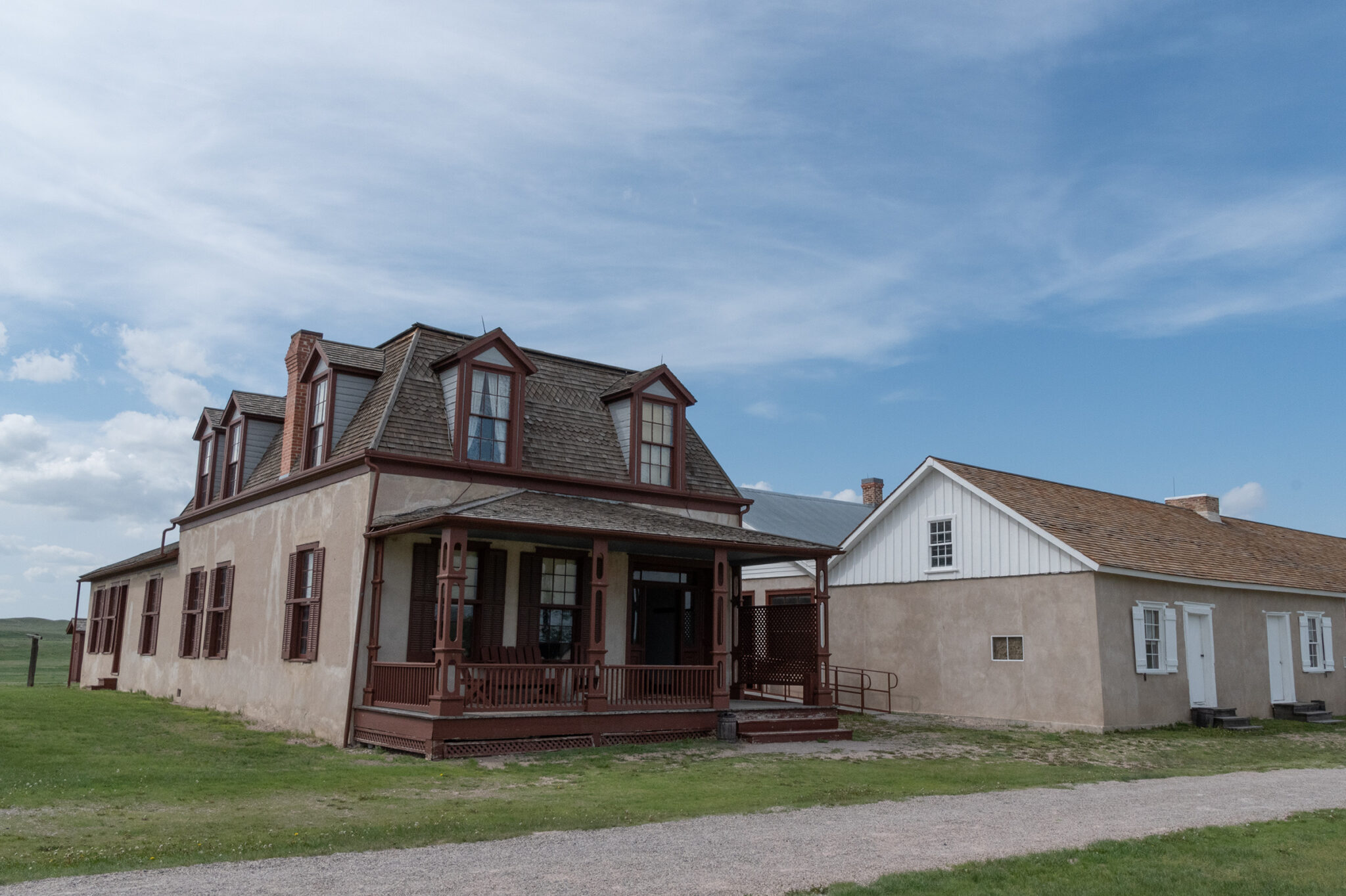
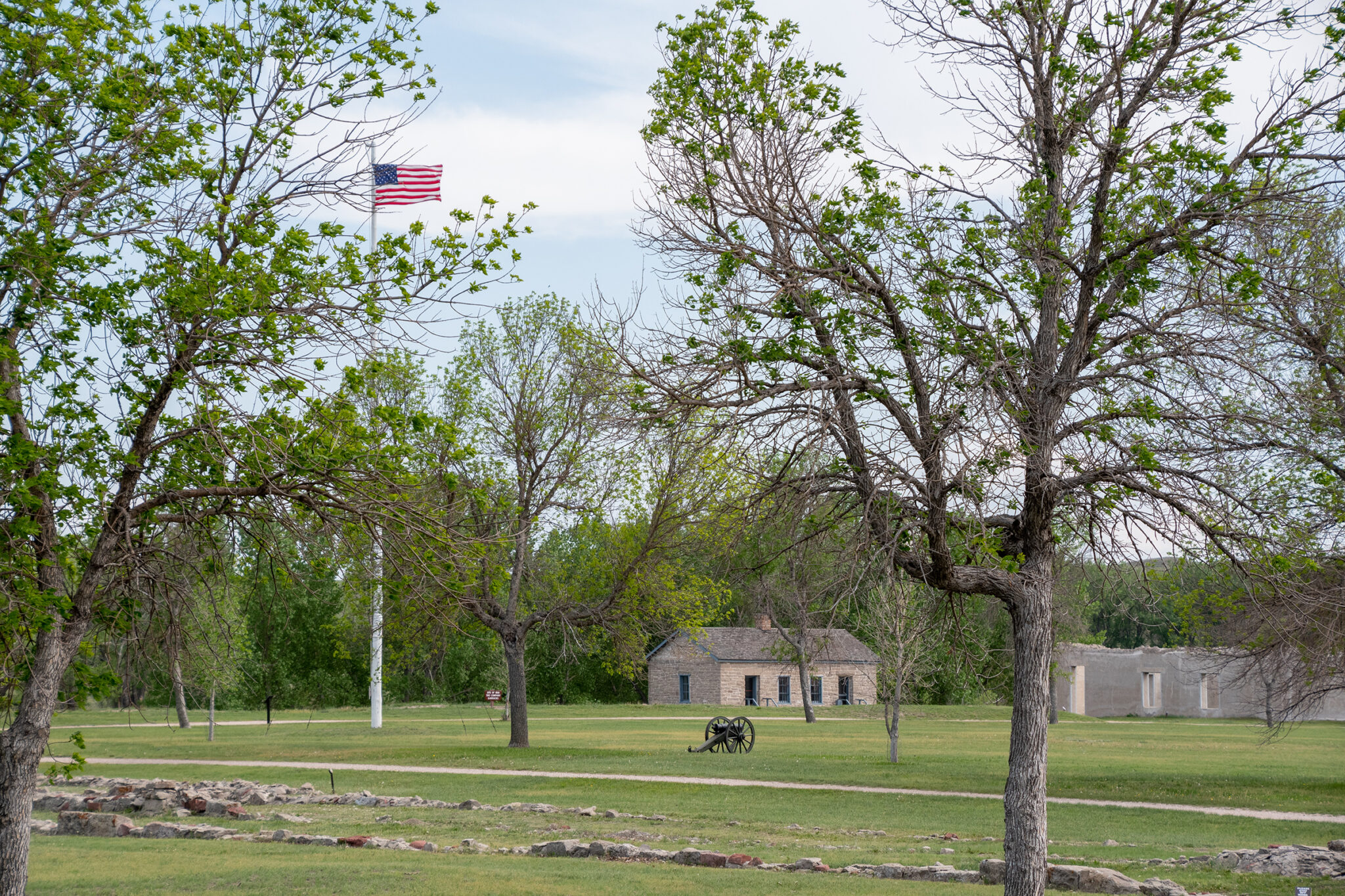
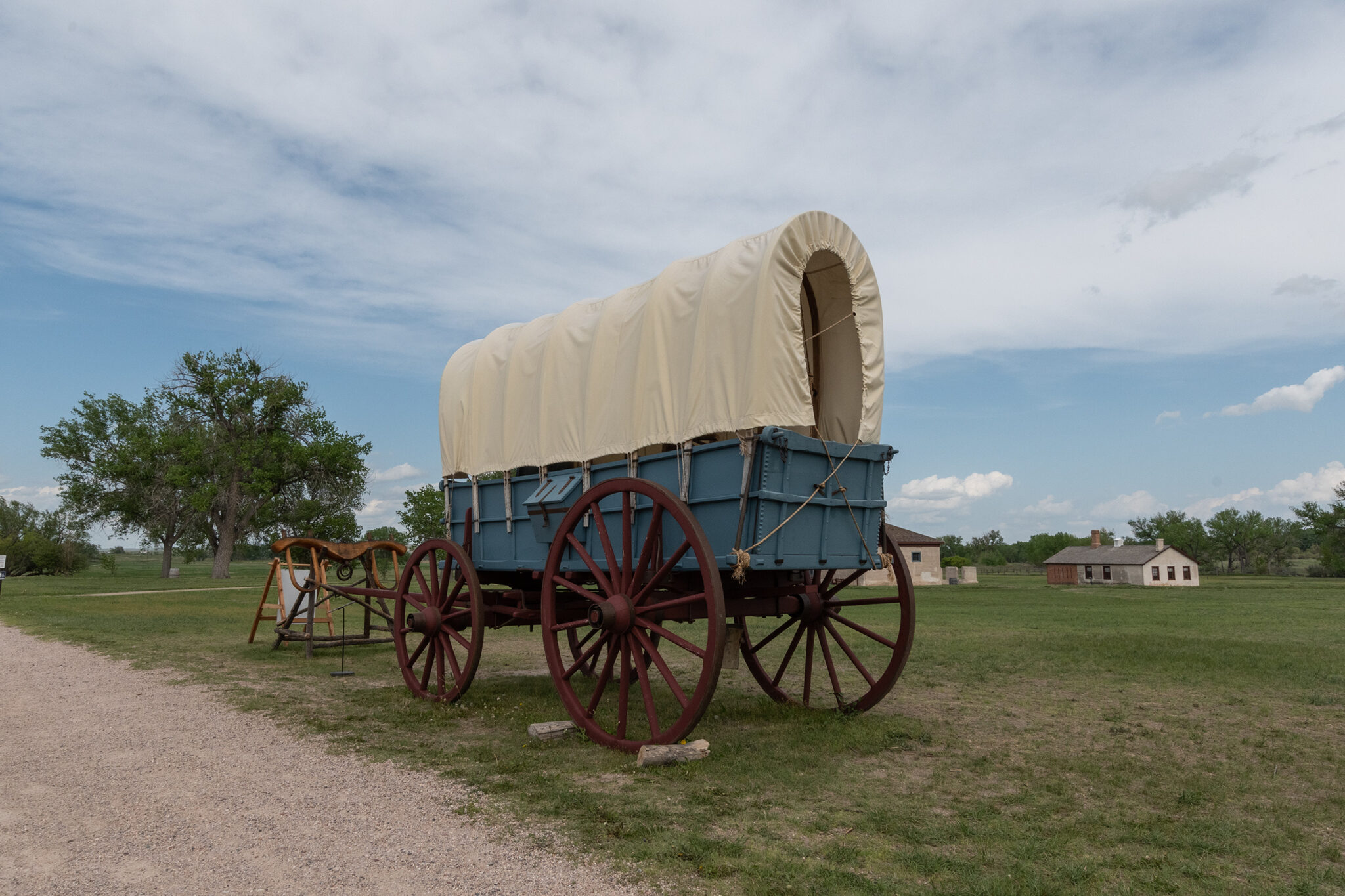
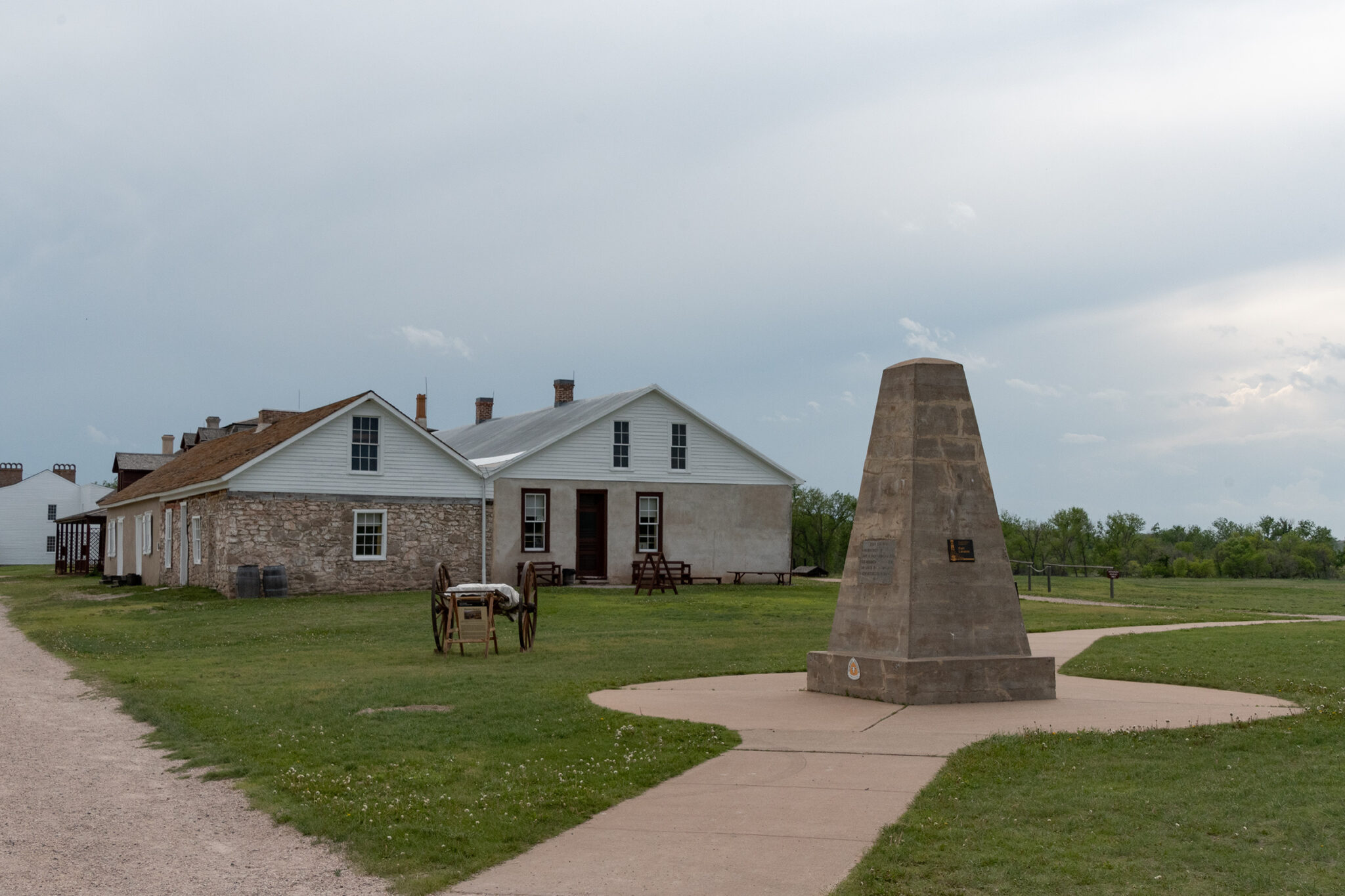
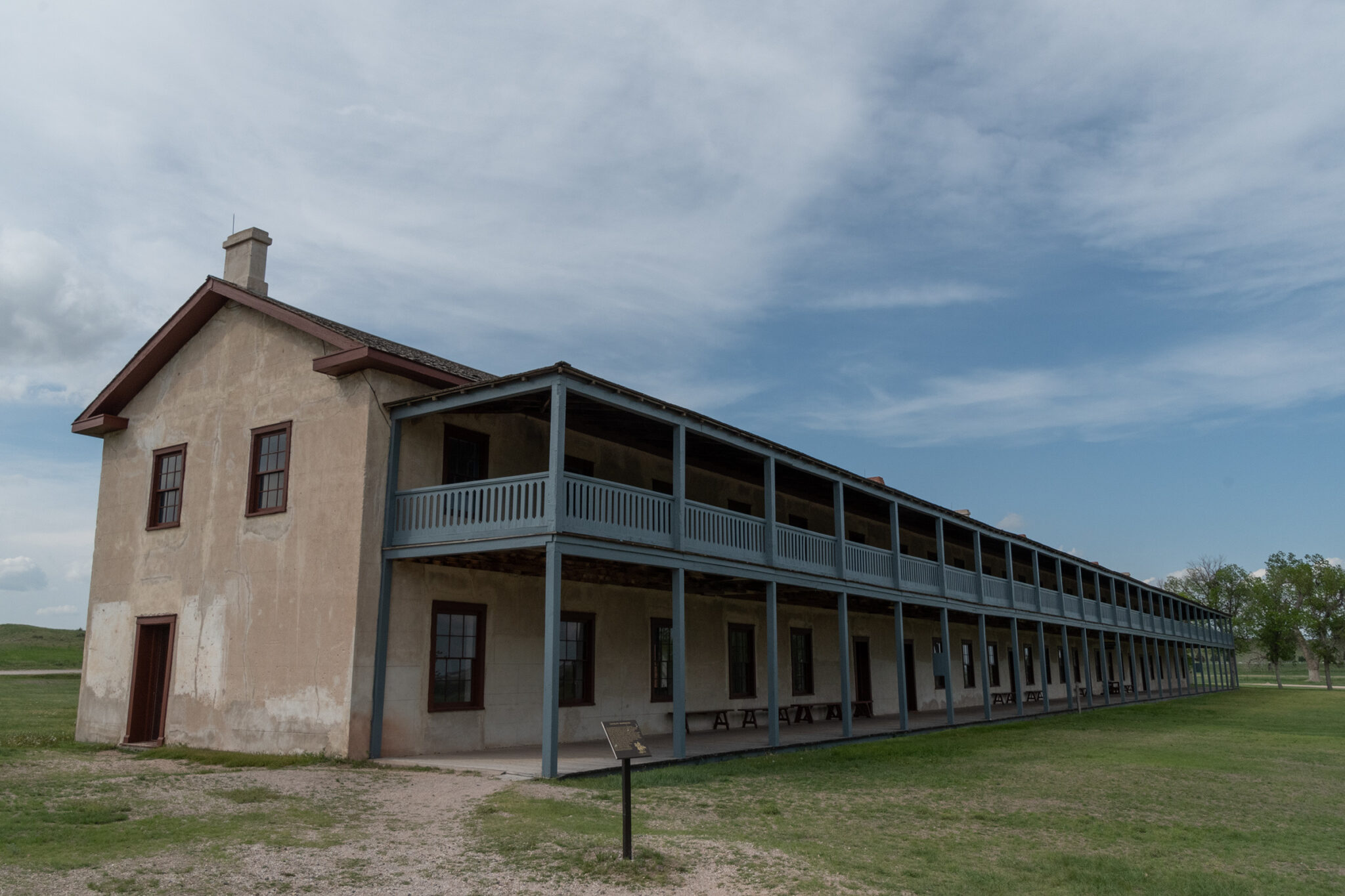
After the completion of the transcontinental railroad, the fort’s importance gradually decreased. Fewer wagon trains journeyed west, and regional Native Americans had been largely subdued. The fort was decommissioned in 1890. The original abandonment order was issued in 1889, and four of the infantry companies stationed there at that time went to Fort Logan, near Denver, Colorado that fall.
Wikipedia
The Park Service has not rebuilt any buildings that have fallen or were dismantled entirely, but they do maintain what’s there. They also outfit suitable buildings with displays of period equipment, houseware, and dress. Compared to Fort Kearney, Fort Laramie was much larger and with far nicer buildings (in fairness, it operated longer and later).
Guernsey Ruts and Register Cliff
Our last stop for the day was another visible set of wagon ruts — in stone! Wear over the high-traffic years through this particular path actually wore ruts into rock, preserving them much more dramatically than the curious grass depressions that other ruts seem to have re-wilded into.
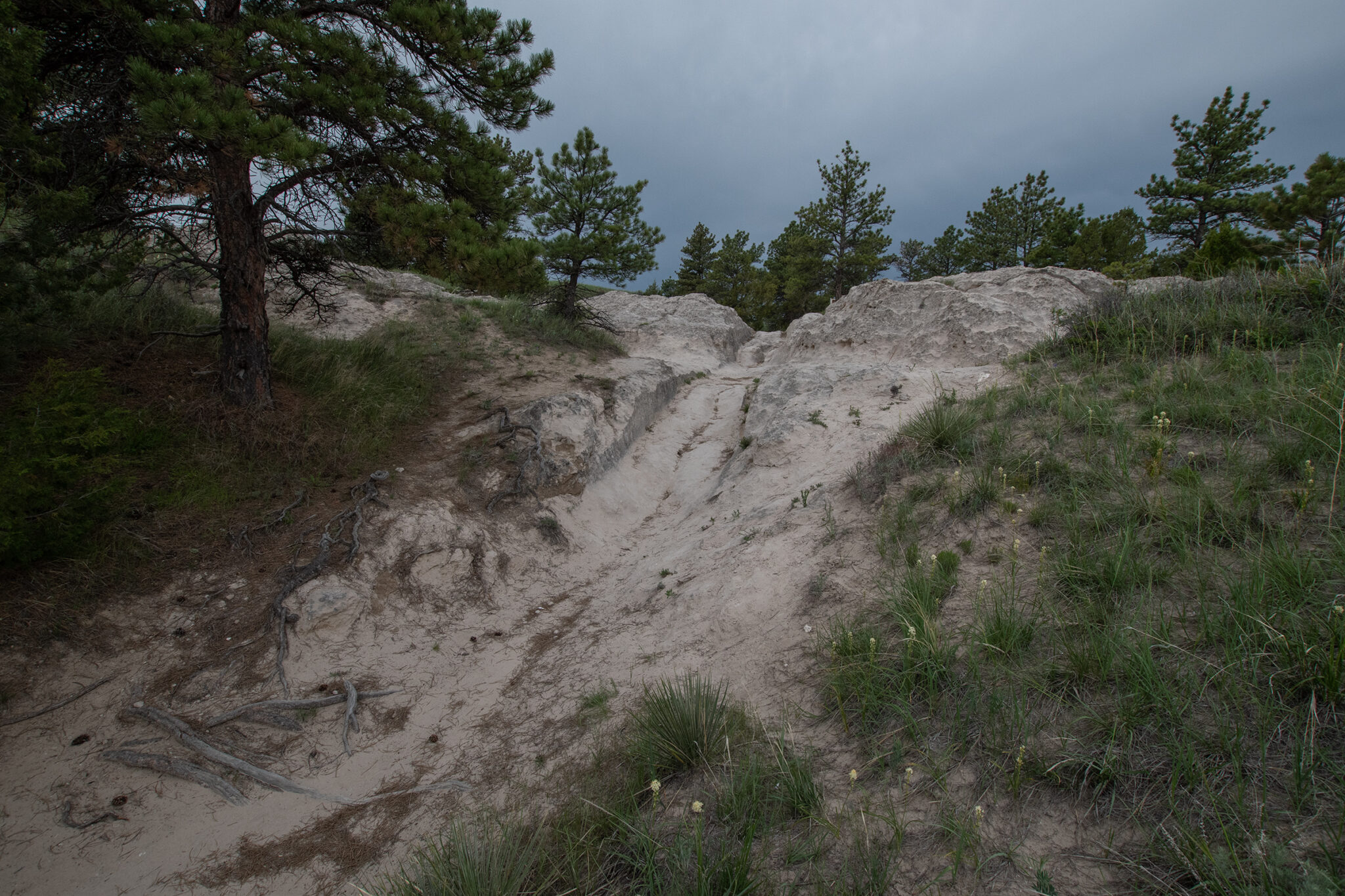
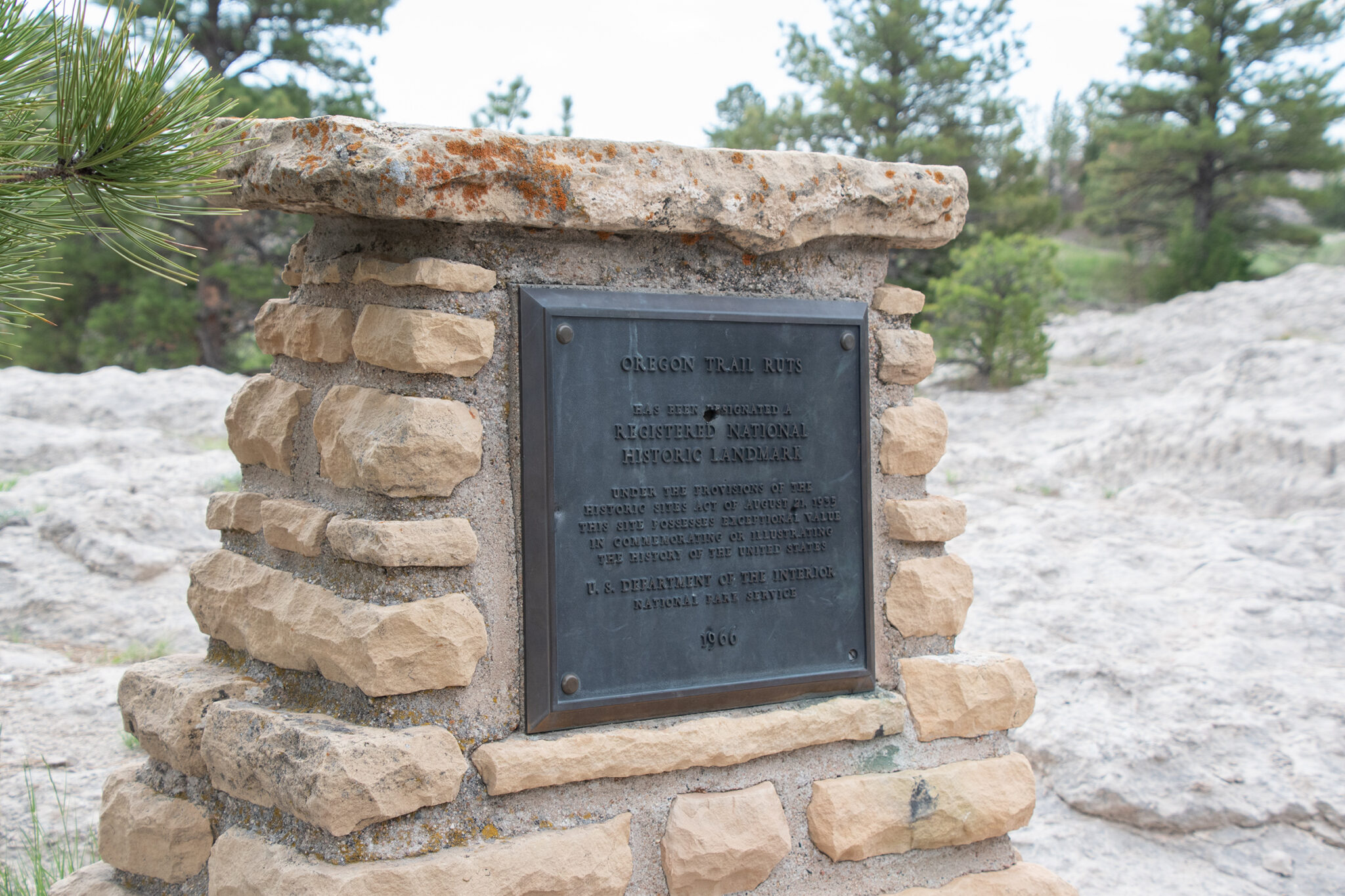
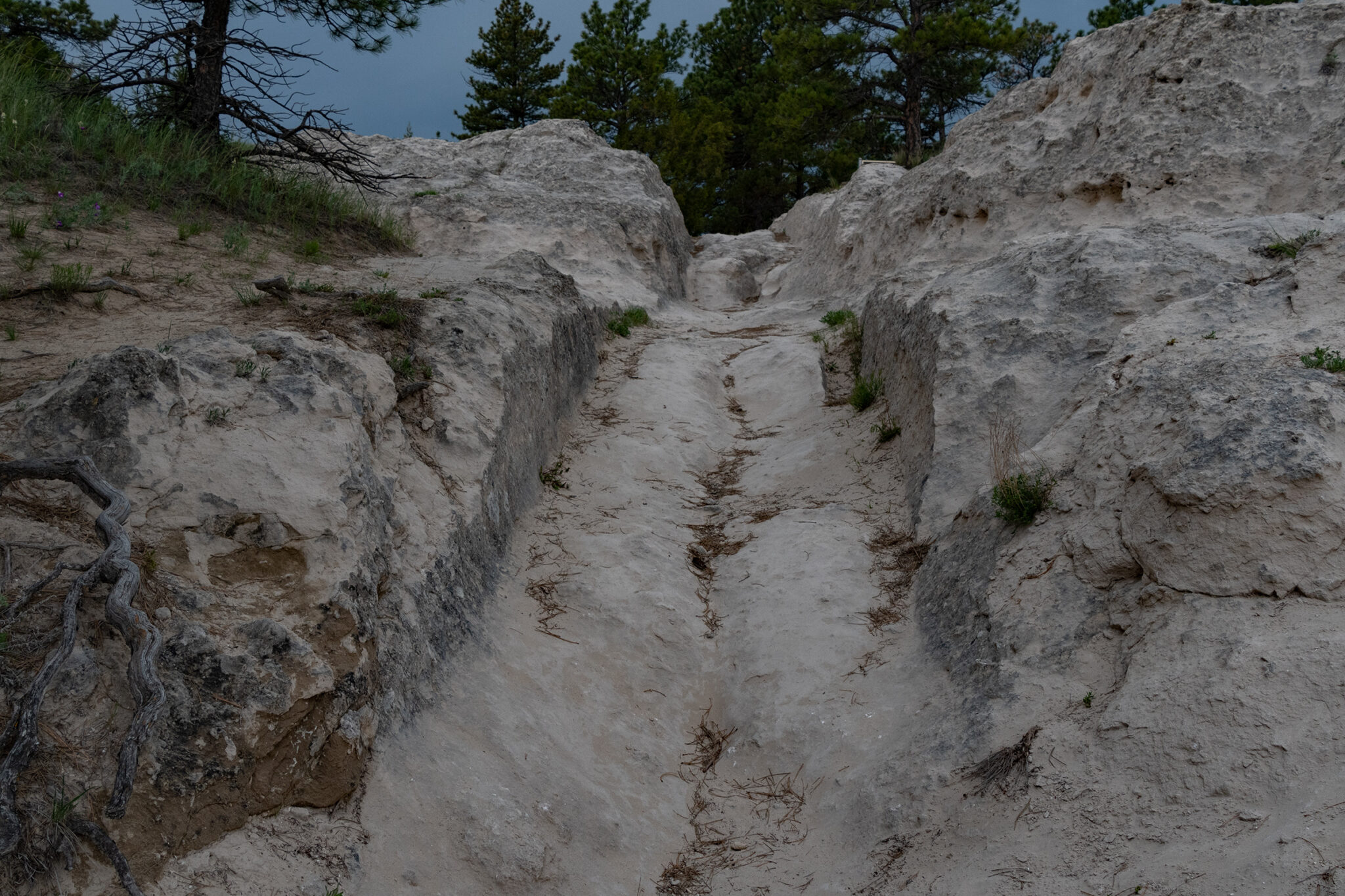
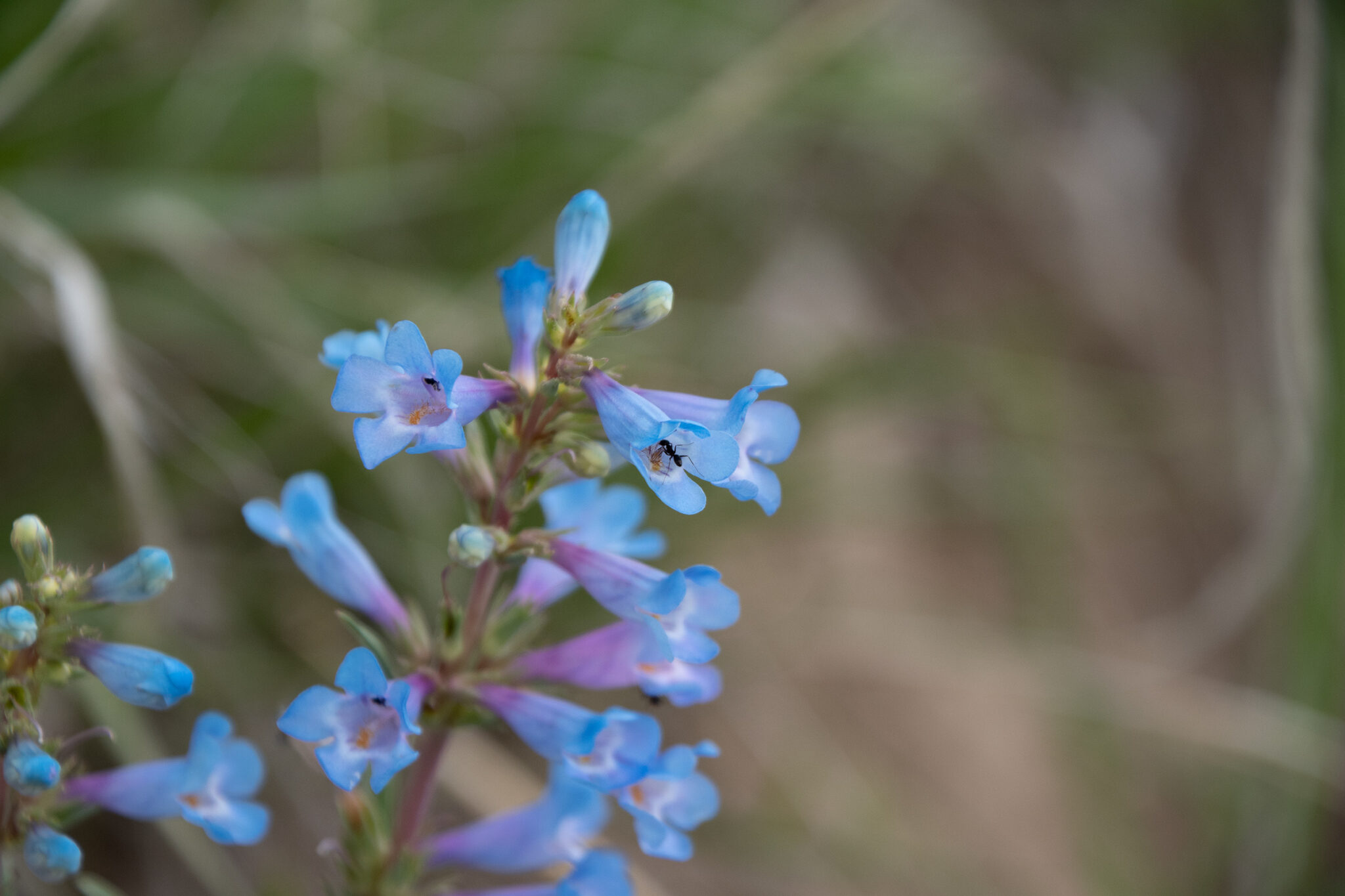
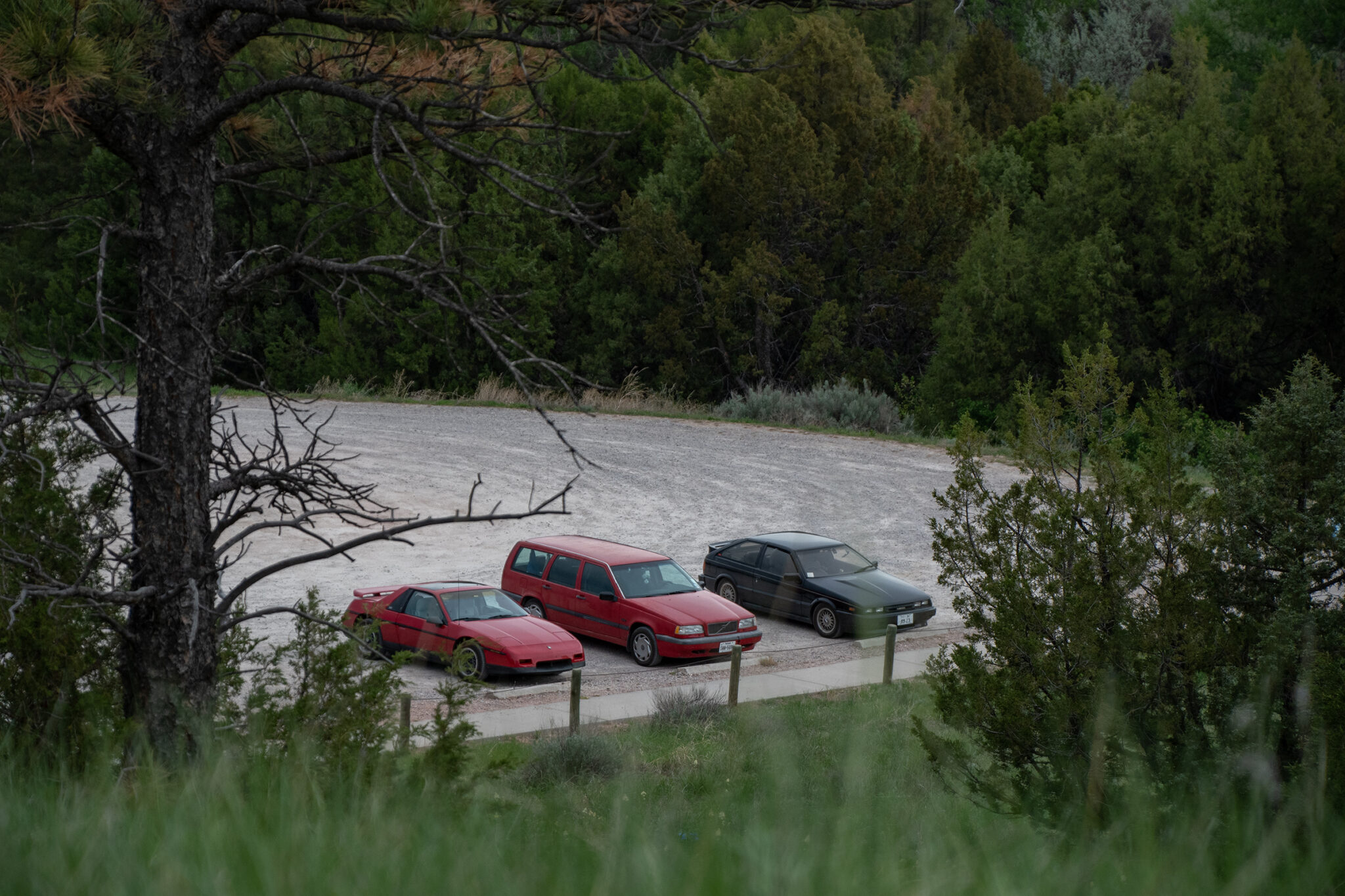
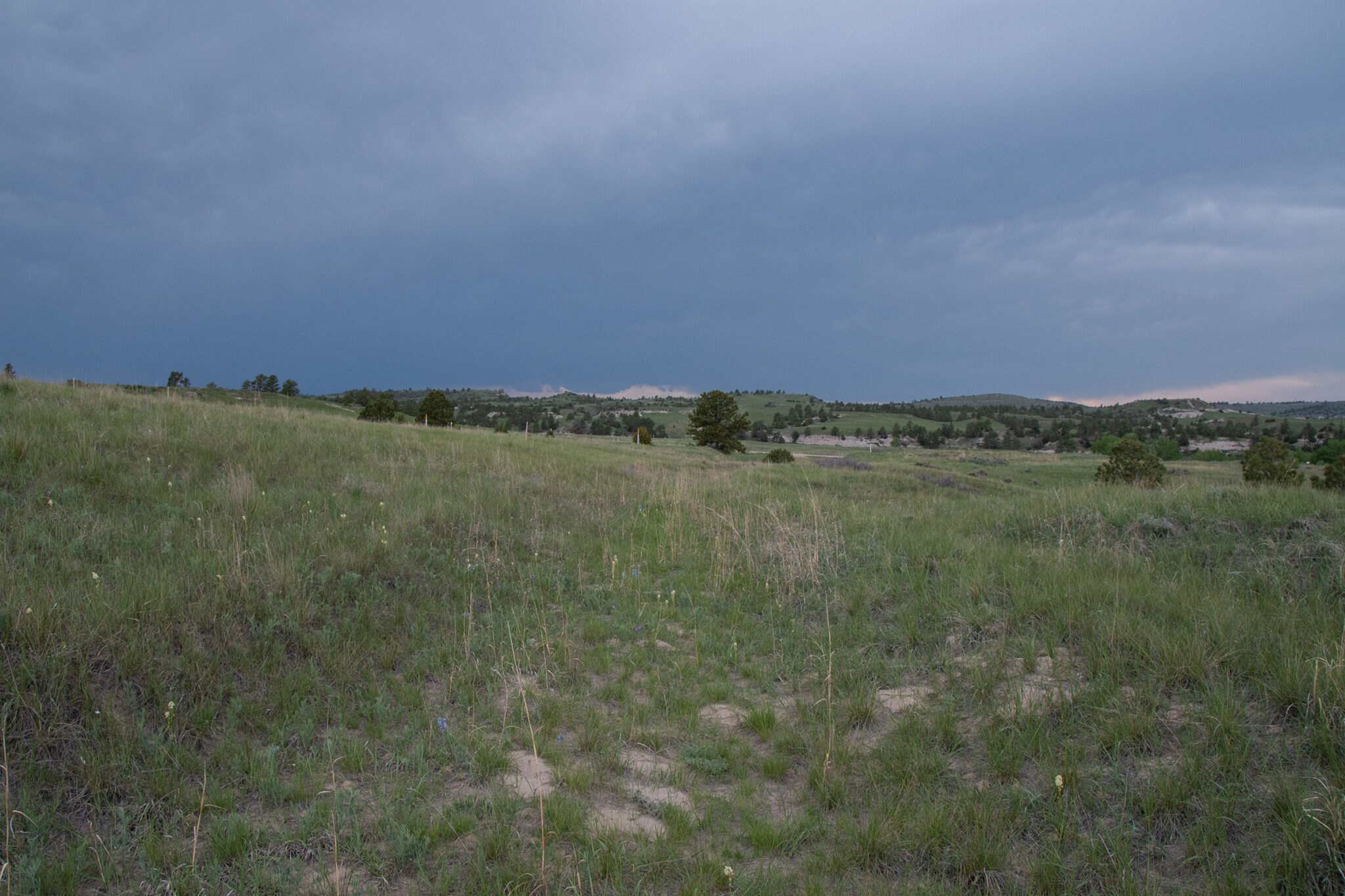
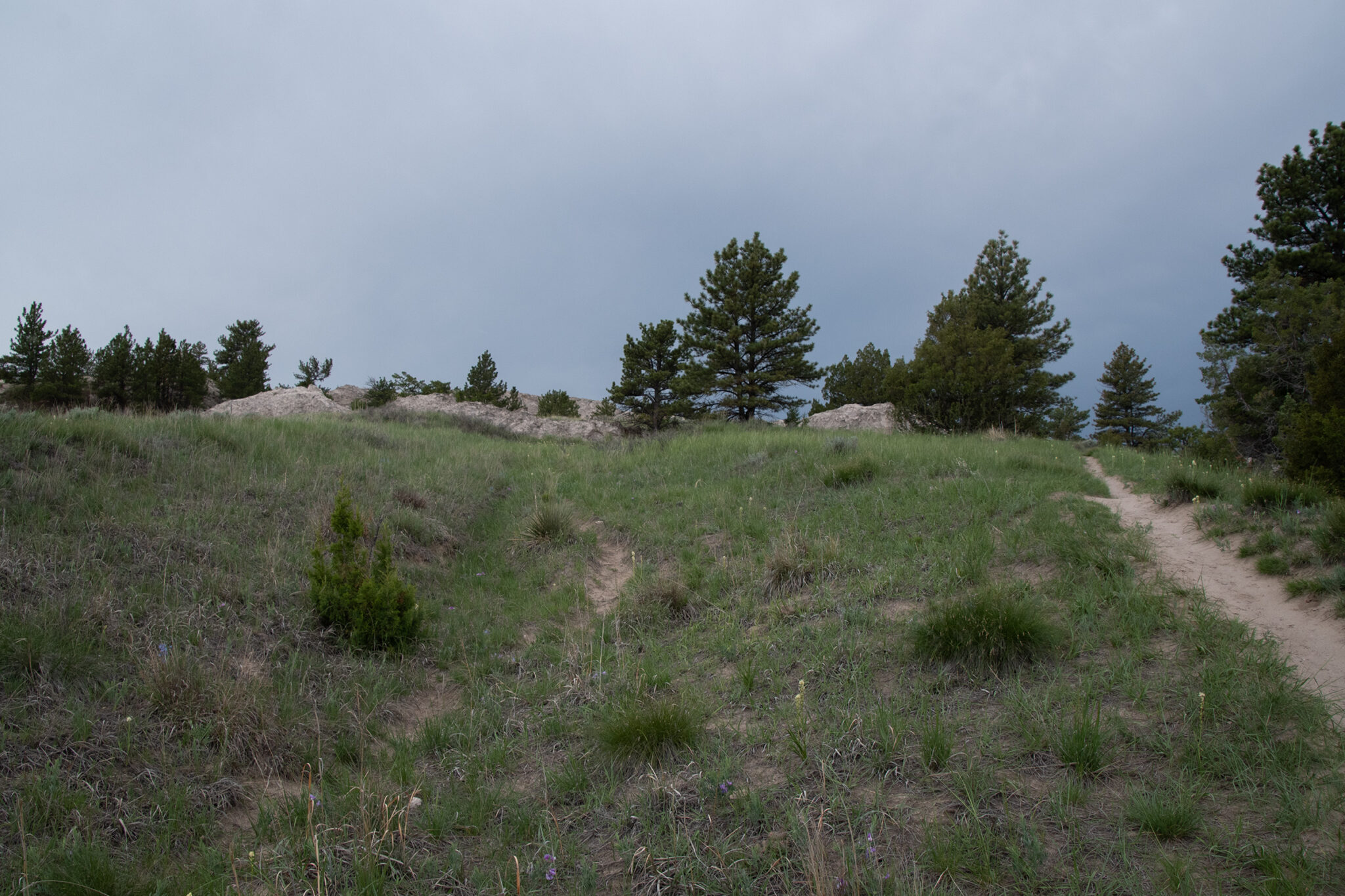
I suppose when I heard “you can still see some wagon ruts from the original trail!” what I envisioned was “two track Jeep trail in mud.” But those fade if not in active use. So of course that’s not what it would look like now. But these do, so these were pretty cool to see next to each other.
Register Cliff is located 2 miles to the East. The camp site was located on the flats below a mile long cliff of soft sandstone used as a name register by thousands of emigrants from 1847 on. It’s interesting that no emigrant ever mentions inscribing names or initials on the cliff in their diaries.
Wyoming Army National Guard
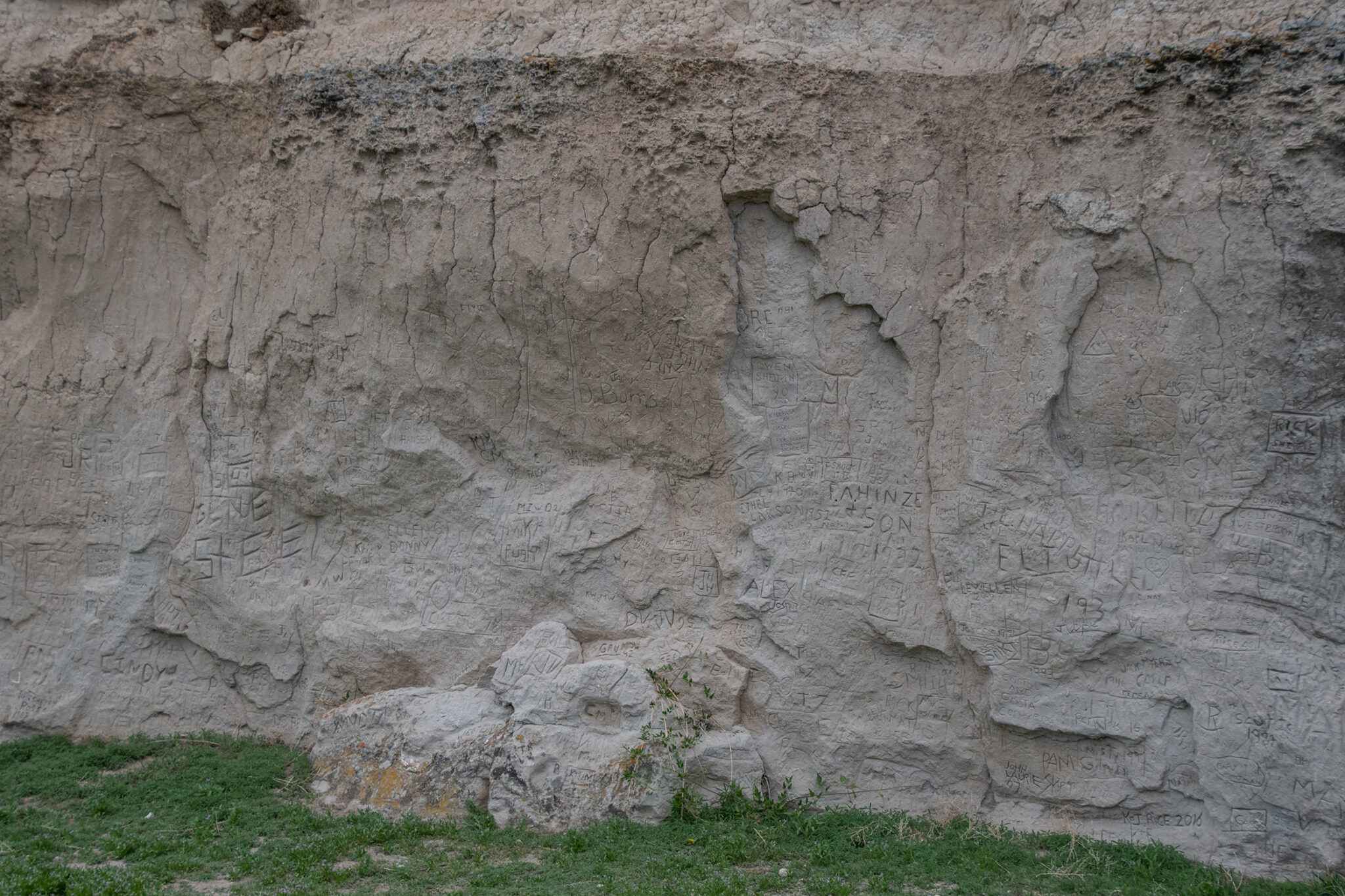
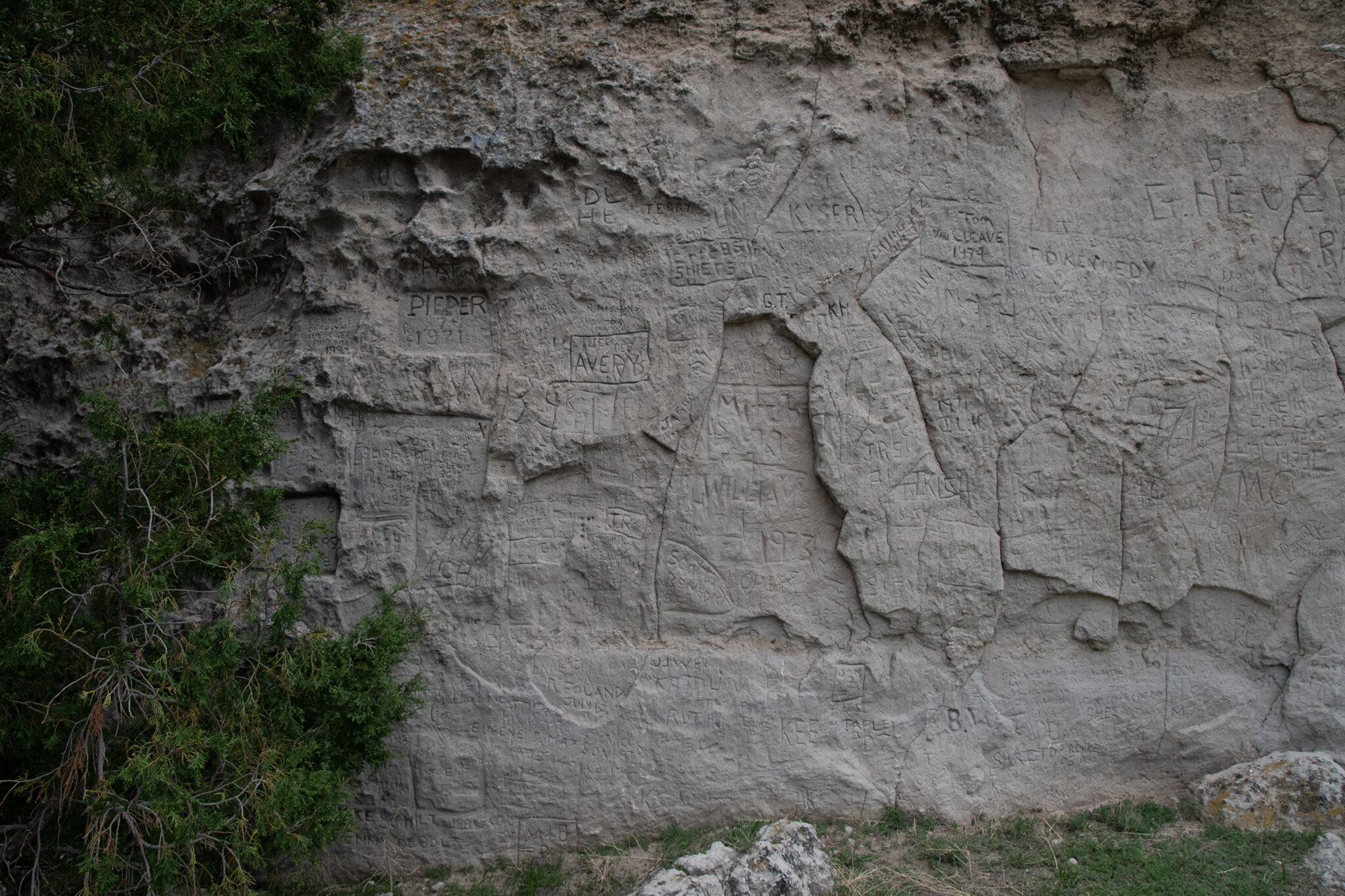
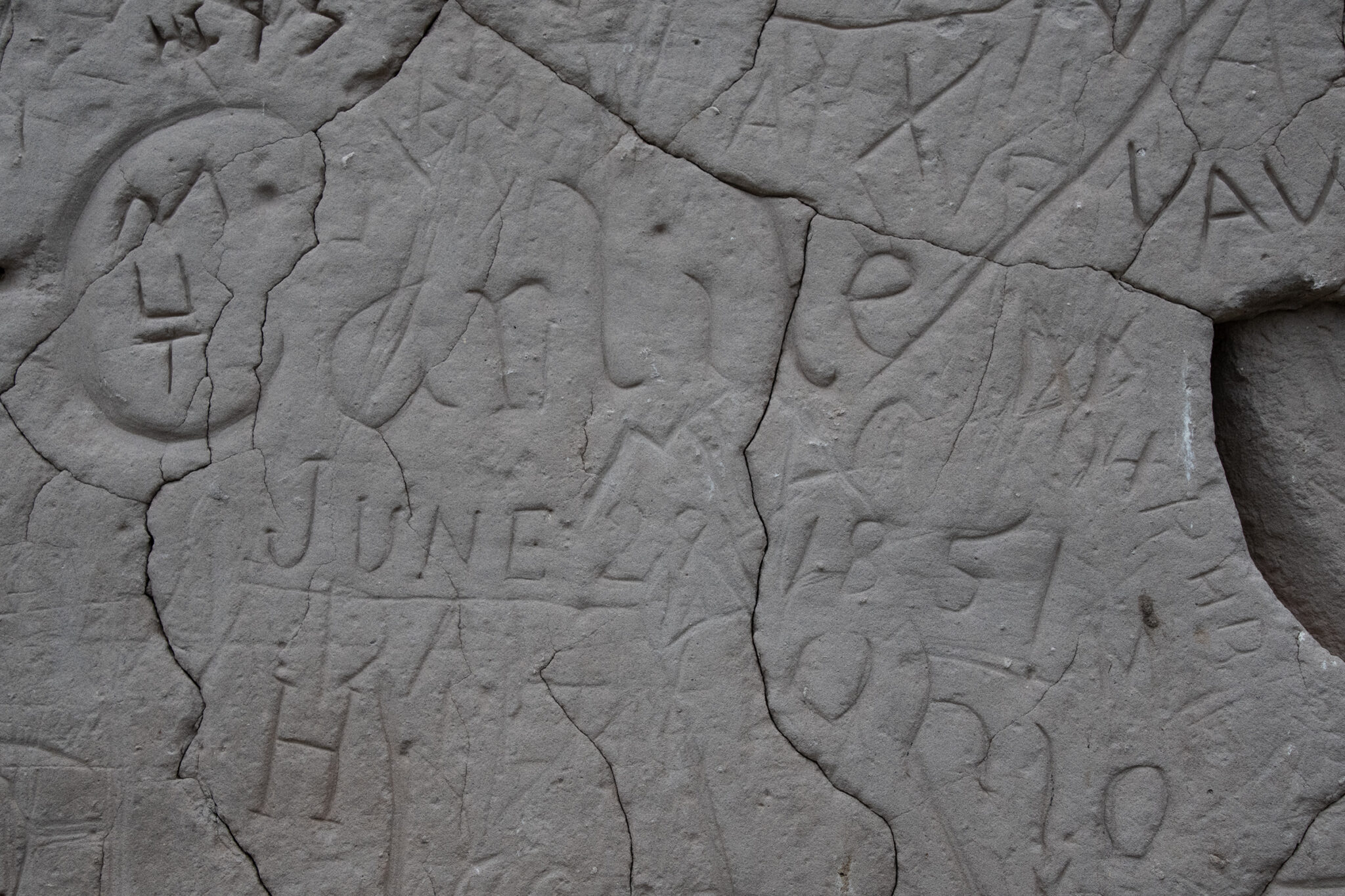
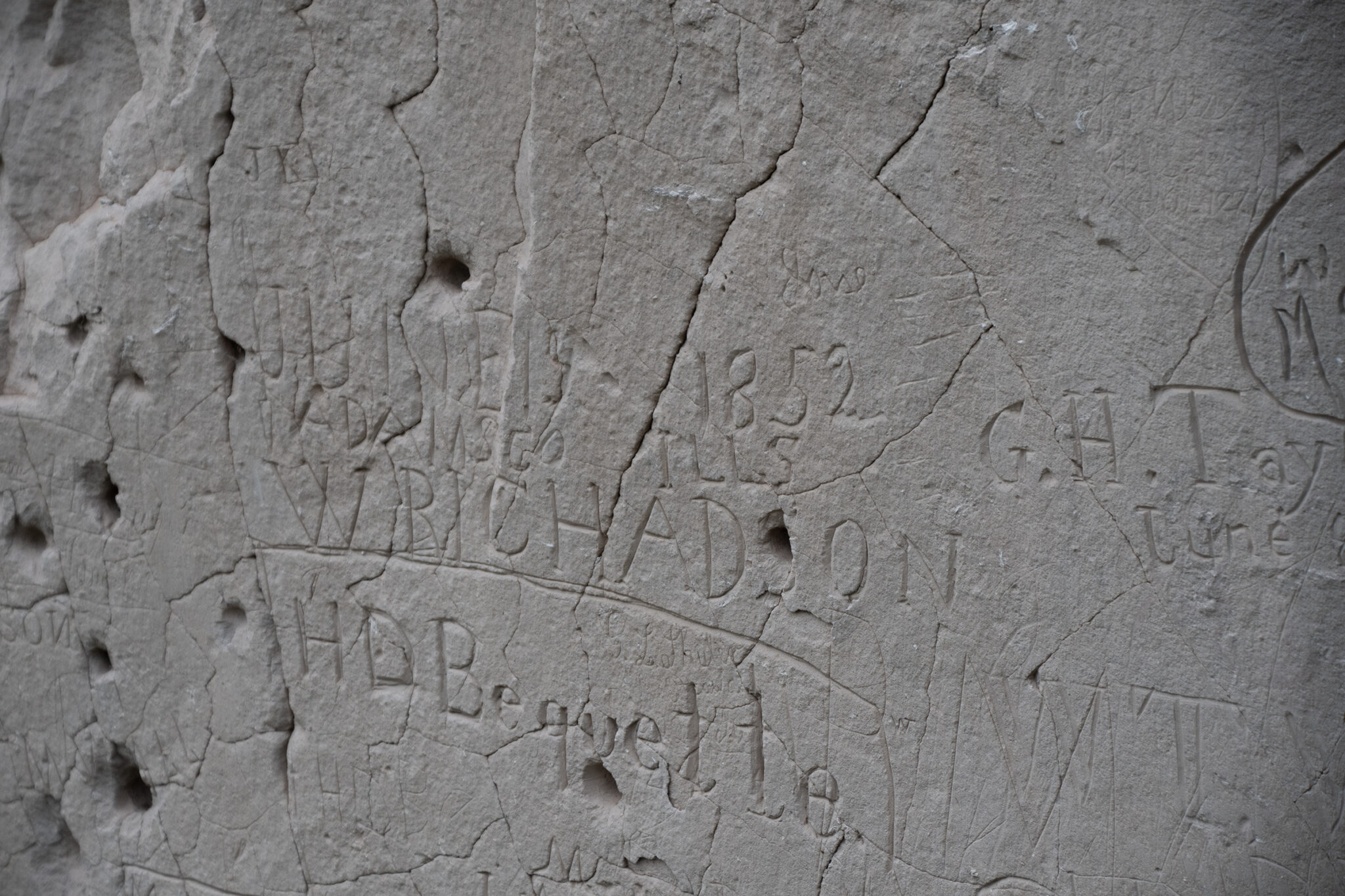
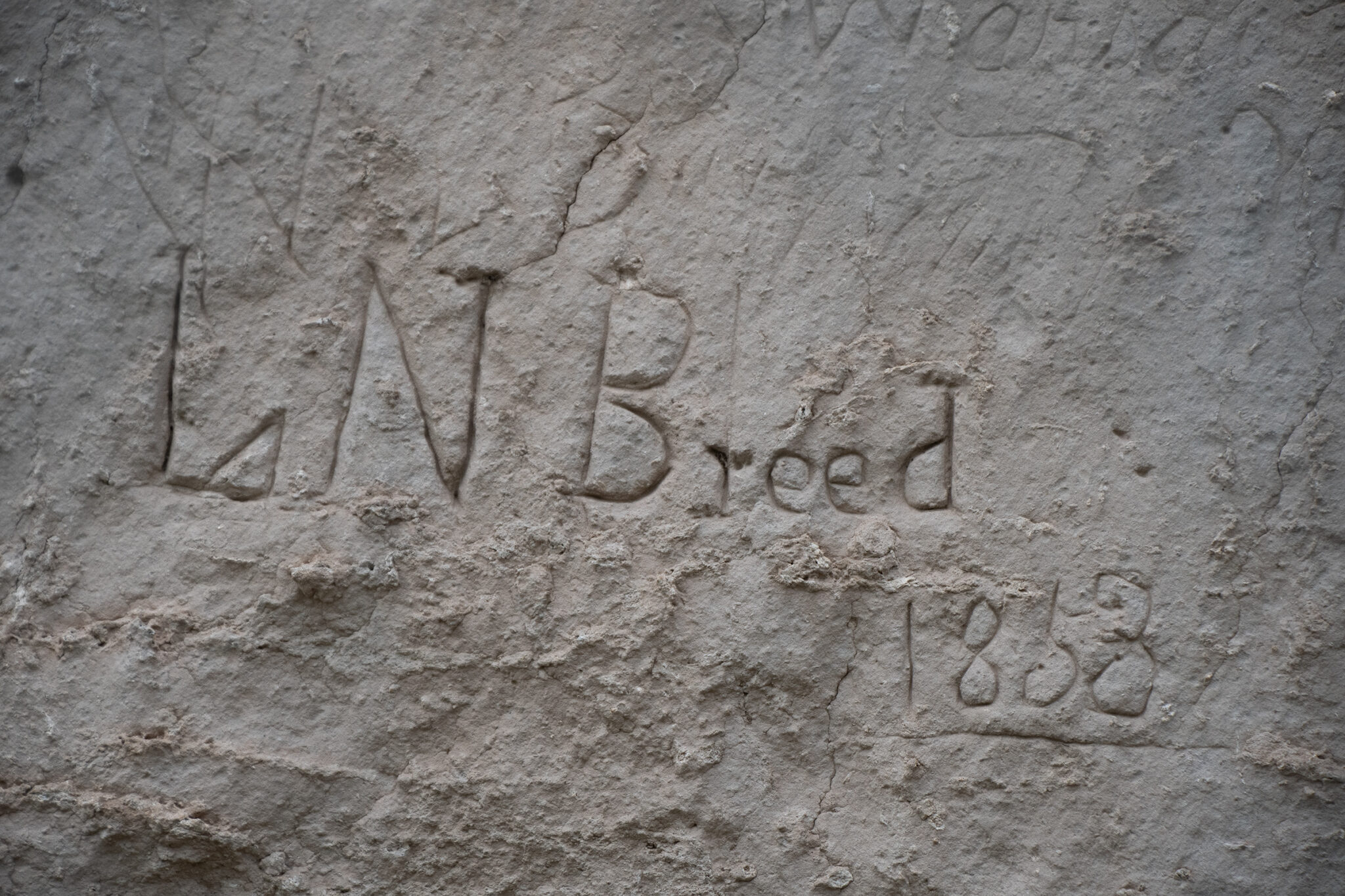
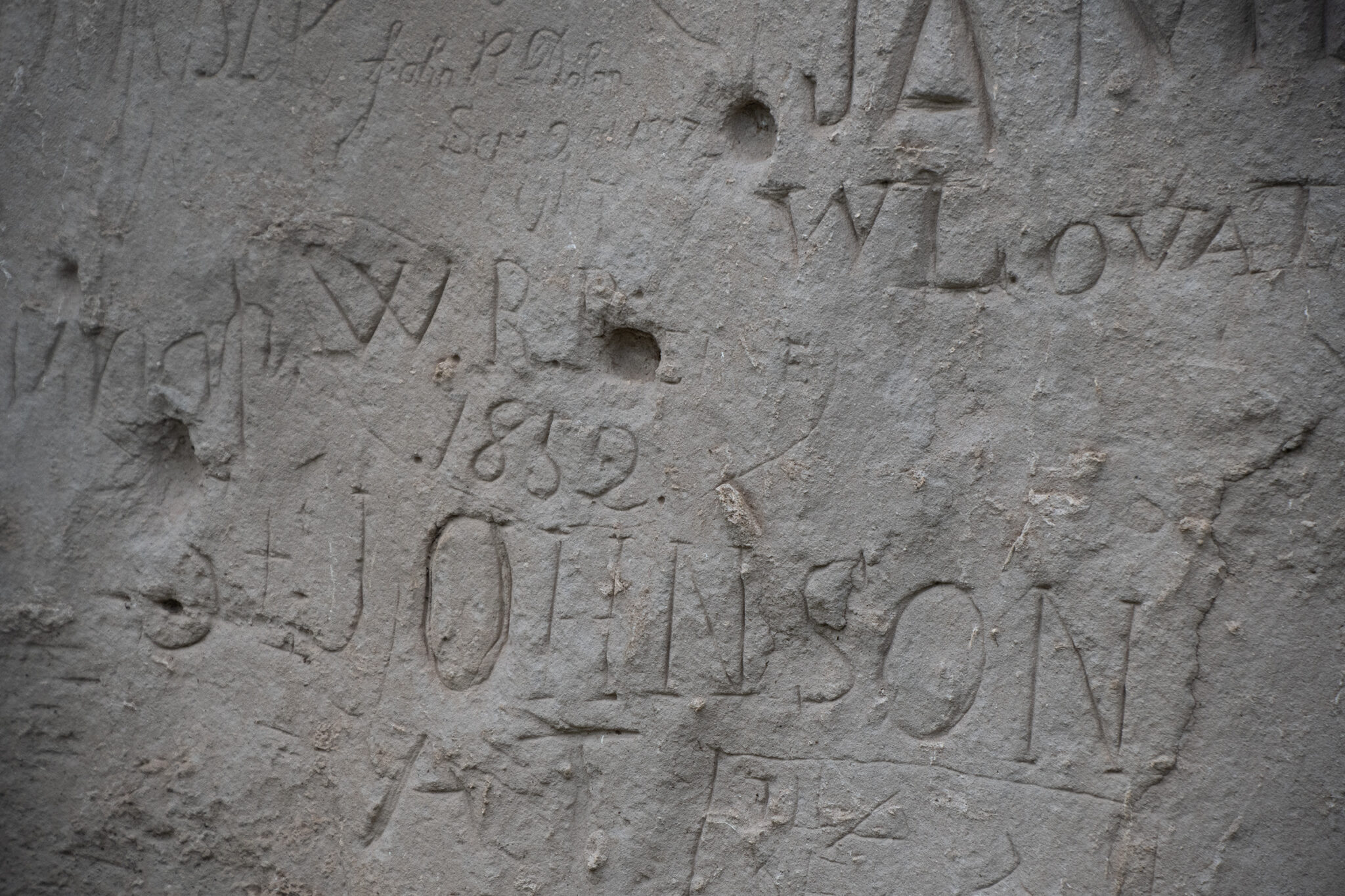
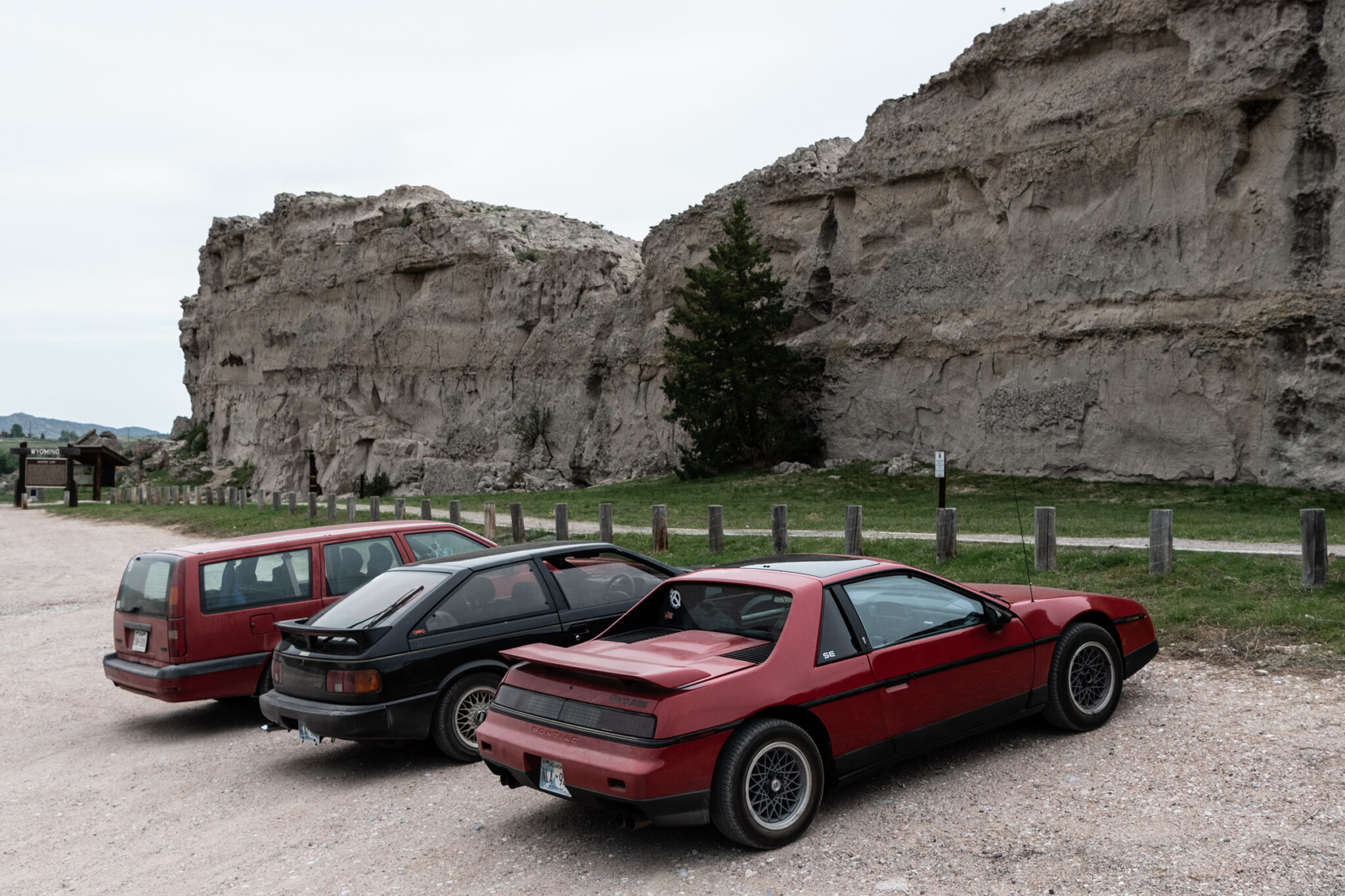
We saw some dated as early as the 1850s, although plenty have also been carved within my lifetime, too. Cue the complaint, “this is why we can’t have nice things,” although both George and I talked about having a hard time deciding what year marks the threshold between “historic markings” and “asshole vandalism.” Wagon trains of the 1860s earned it. But in the 1890s… 1920s…? This wasn’t exactly an easy trek until the US Highway and US Interstate systems and reliable vehicle transport were commonplace. I drove here in a car with air conditioning. (Although I suppose if that’s my measure, George and Evan can both leave their initials.)
Bunkhouse Motel
After dinner at (checks watch) the only restaurant still open at 7pm in this town, we headed to our motel for the night. With lightning moving in from the distance, each of us set about a small car project. George developed a rattle in his sunroof glass today that is has apparently become dramatically loud. Evan tried to see if he could make headway on his heater. And I replaced my spark plugs to see if a little old-fashioned tune-up would help matters at all. In the process, I made two discoveries:
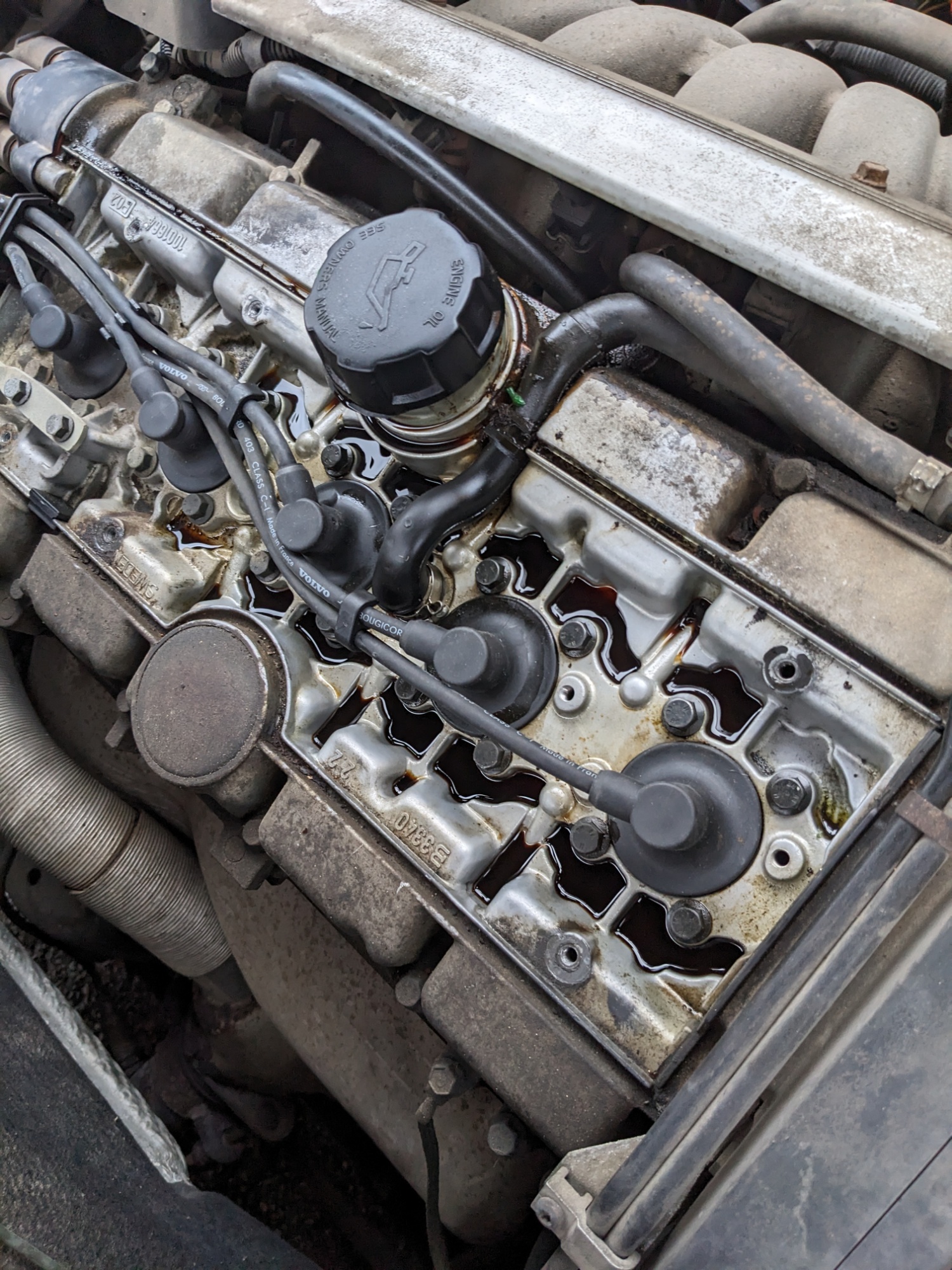
First, that butyl gasket shim we added to my oil cap to seal it apparently doesn’t. The spills on top of my valve cover are worse now than they were before. The gasket seems like it was was pushed out by pressure, which implies that perhaps my PCV valve is fouled? (Talking out of my ass here: that’s not a thing I knew about until tonight.)
The question is: do I put on a new oil cap to seal the leak — which, if the valve is actually fouled — might cause a new leak to form elsewhere? Or do I think the oil took the path of least resistance and a new cap would send it through the PCV properly instead…
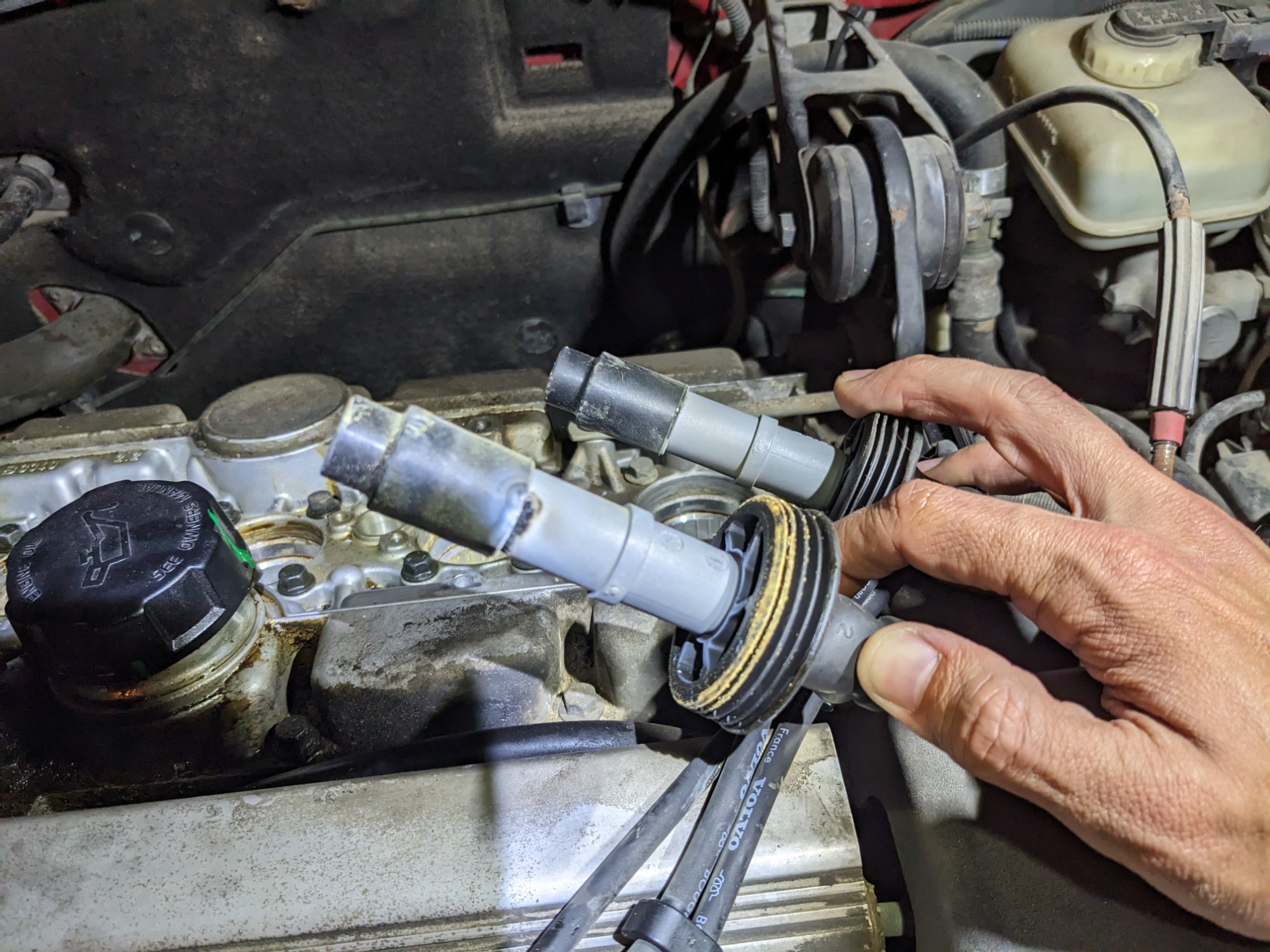
Second, look at that spark plug wire. That looks like arcing through the sheath, which would bypass (or cut voltage to) the spark plug and send current through the engine ground instead, causing a partial or total misfire. That right there might be my biggest problem. Unfortunately, these plug wires would require a few days lead-time at just about any store I might get them from.
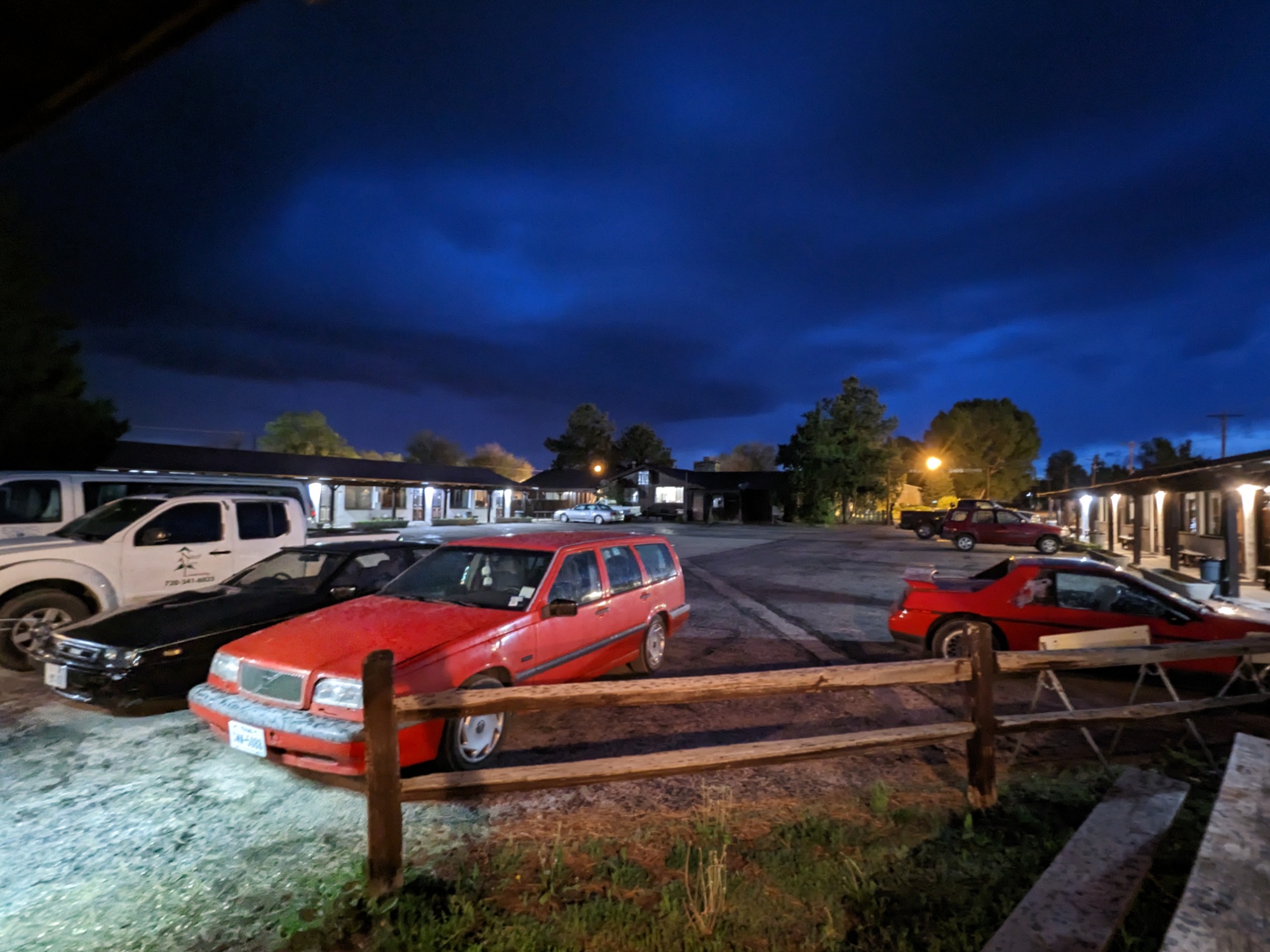
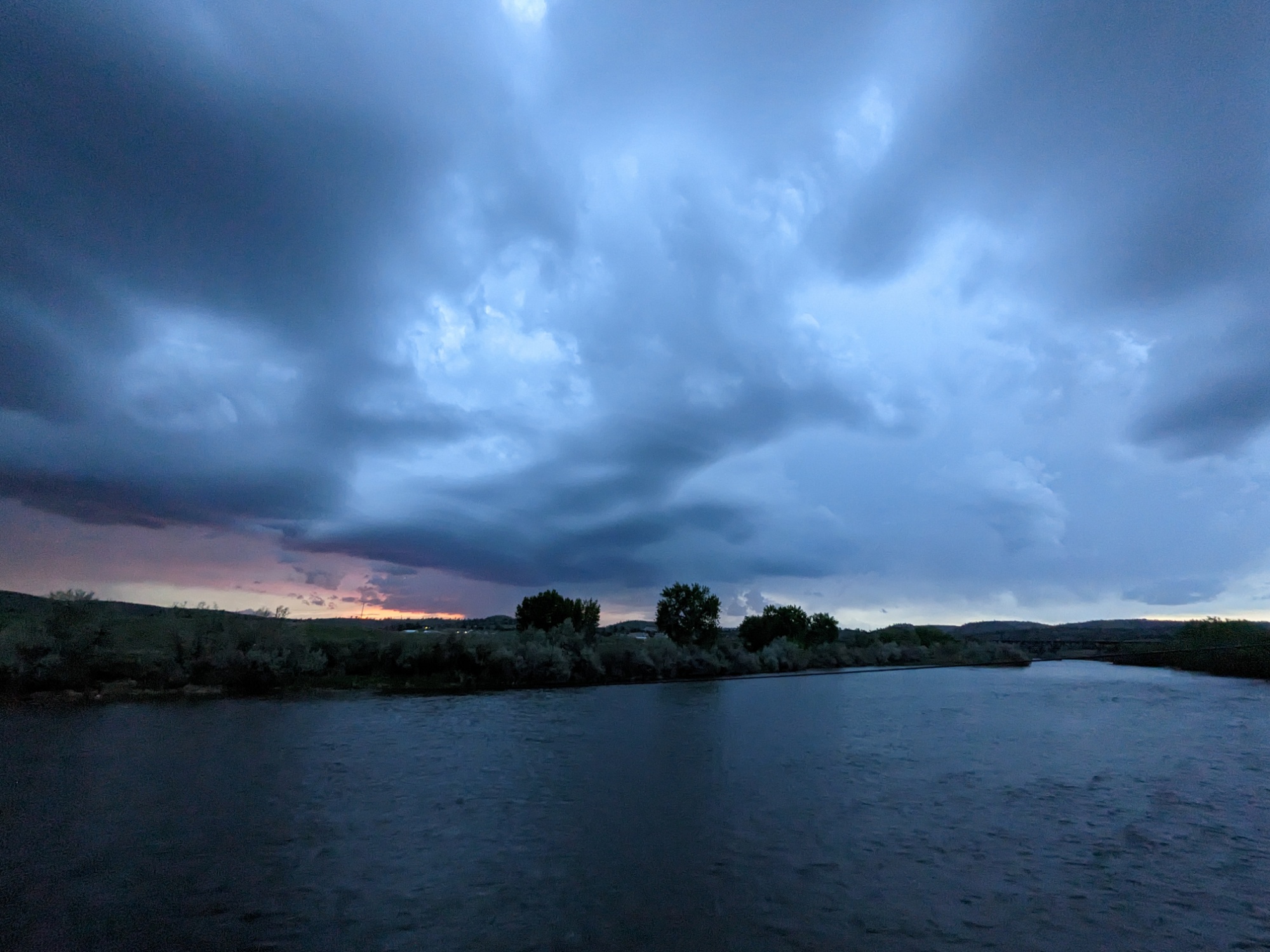
But as the sunset behind an approaching storm, I closed the hood over my partially reassembled motor, poured a little whiskey, and went to stand in the lightning and thunder and breathe the mountain air until it started to rain. Tomorrow’s problems can wait.
